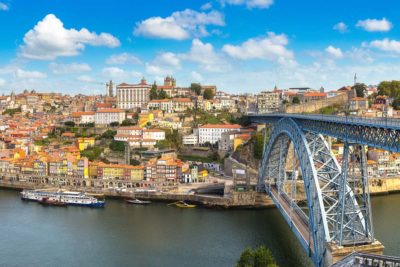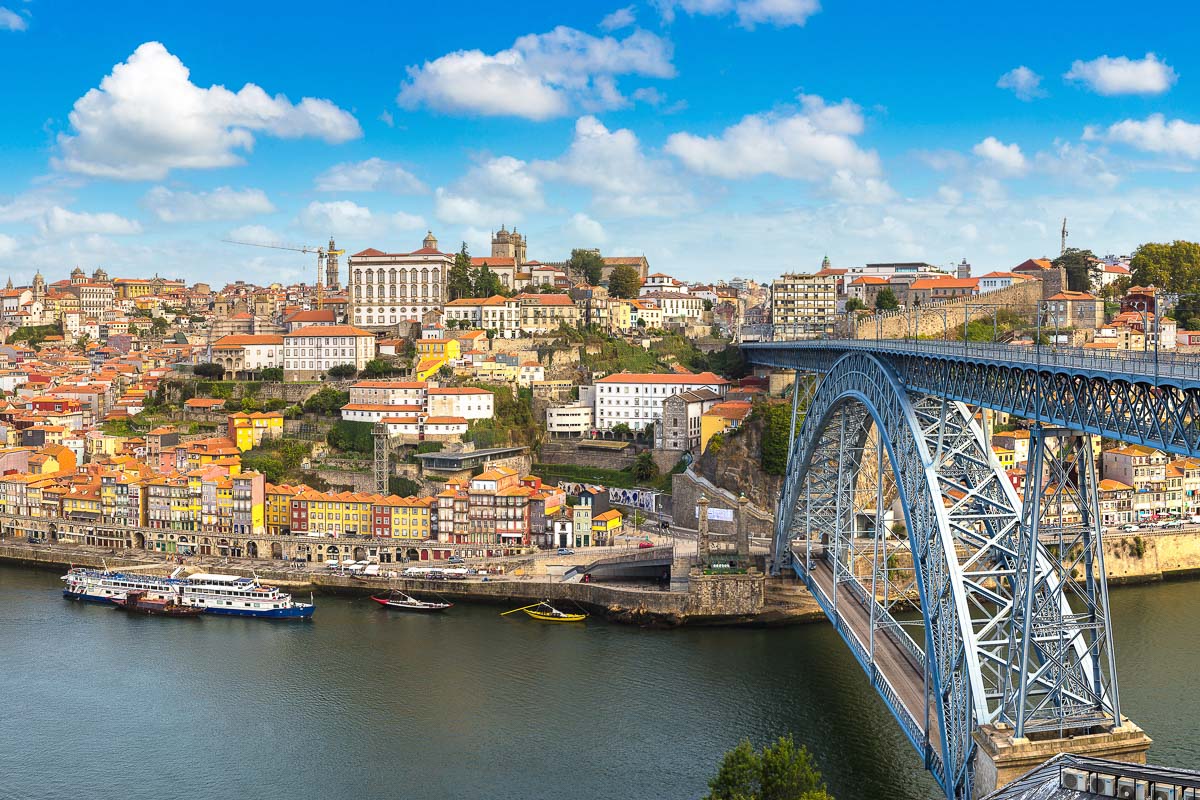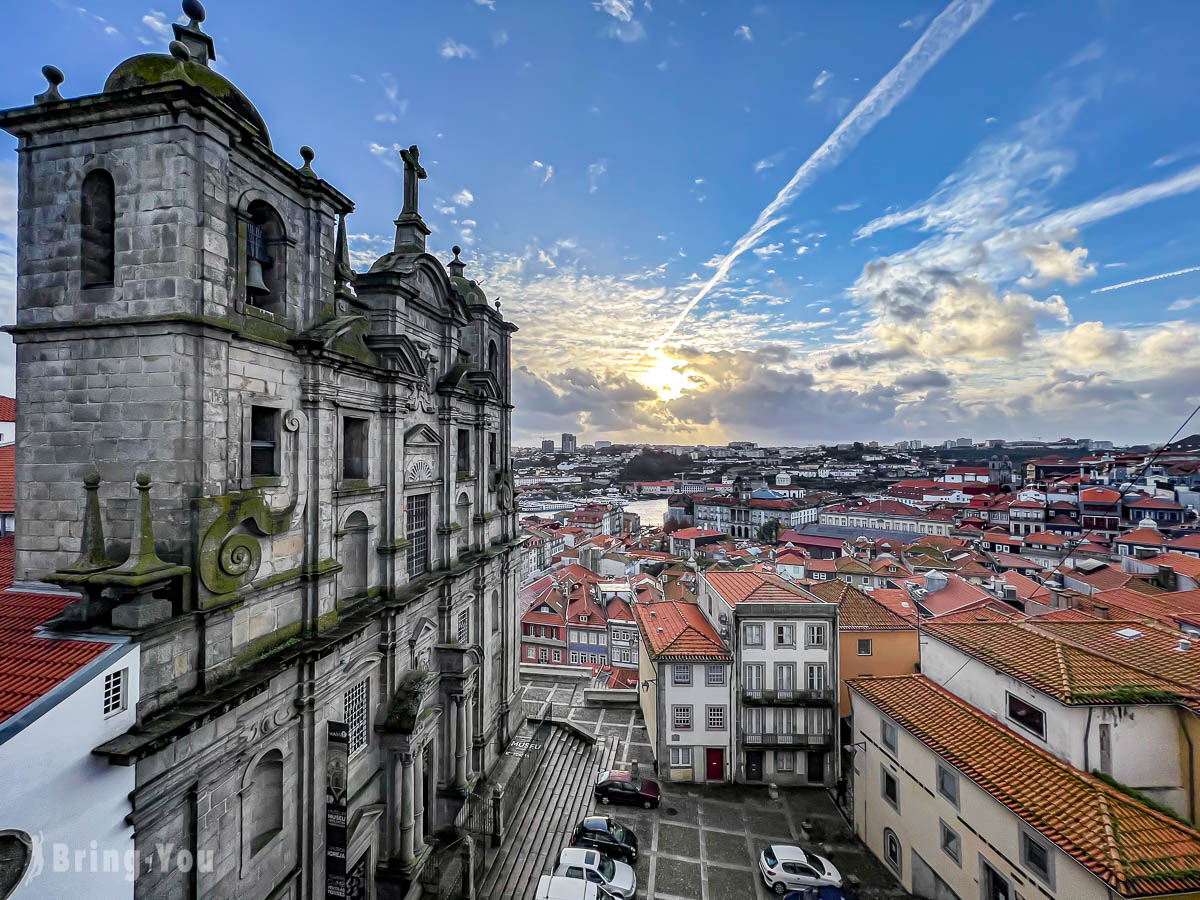
Three hours by car northeast of Lisbon, Porto invites curious history buffs and architecture hunters with a dynamic culture and one-of-a-kind masterpieces.
Start with awe-inspiring tile art at the train station before heading to Lello, one of the world’s finest bookshops to capture envy-worthy photos.
Once the sun hits its peak, rest your tired cores at one of the charming cafes or top-rated restaurants but don’t leave yet if you haven’t tried their world-renowned fortified wine.
Though less famous than Lisbon, Porto is dubbed its sister city with plenty of maritime gems and bearing the name “port” in its Portuguese identity.
Before you hit Porto, here are my 12 favorite things to do in Porto to unlock the city’s fun attractions, and unforgettable memories in art, literature, gastronomy, and local culture.
Read More: The Best Travel Guide To Lisbon, Portugal : Transportation Tips, Places To Visit, Best Eats, & More
What Is There To Do In Porto?
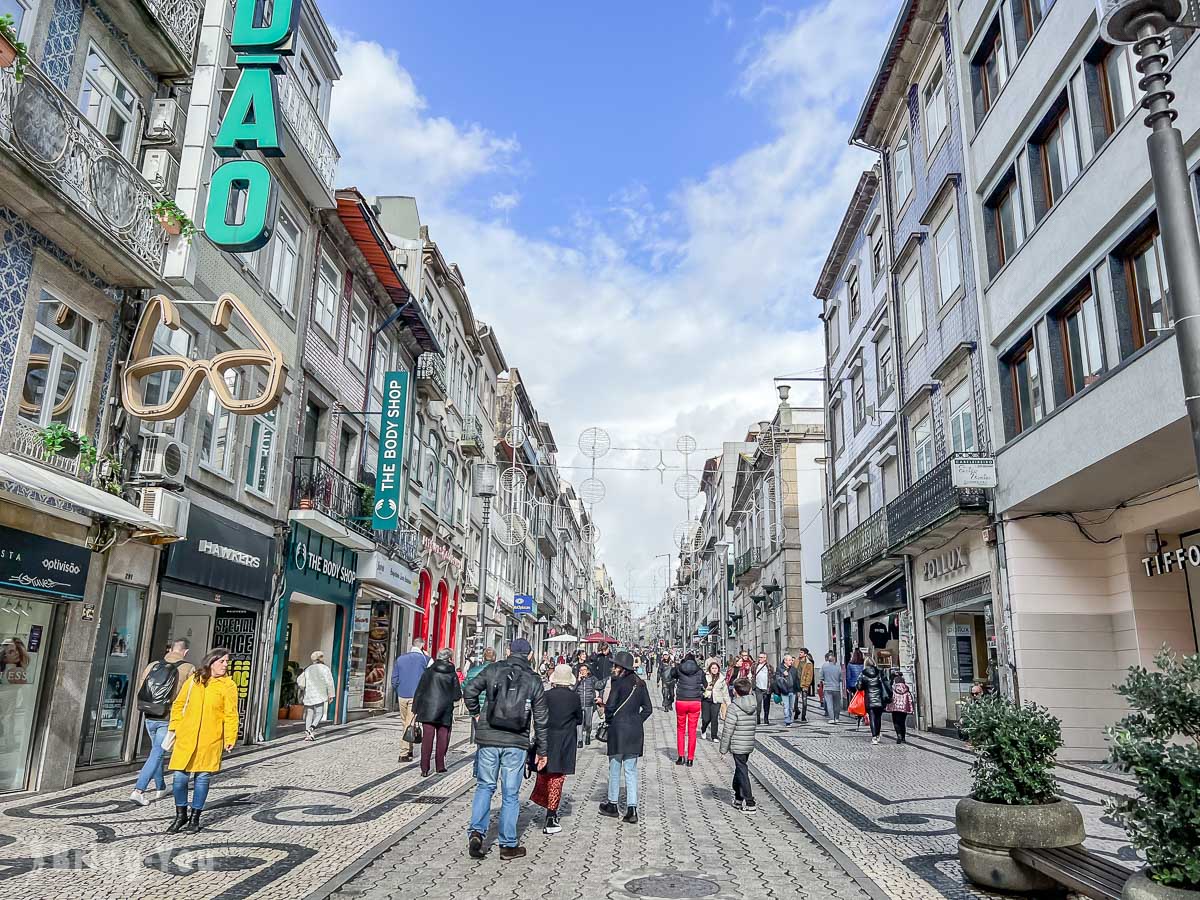
On any given sunny day when the air is crisp with the high blue sky, nothing’s better than an early morning stroll down the ancient streets in Porto’s Old Quarter.
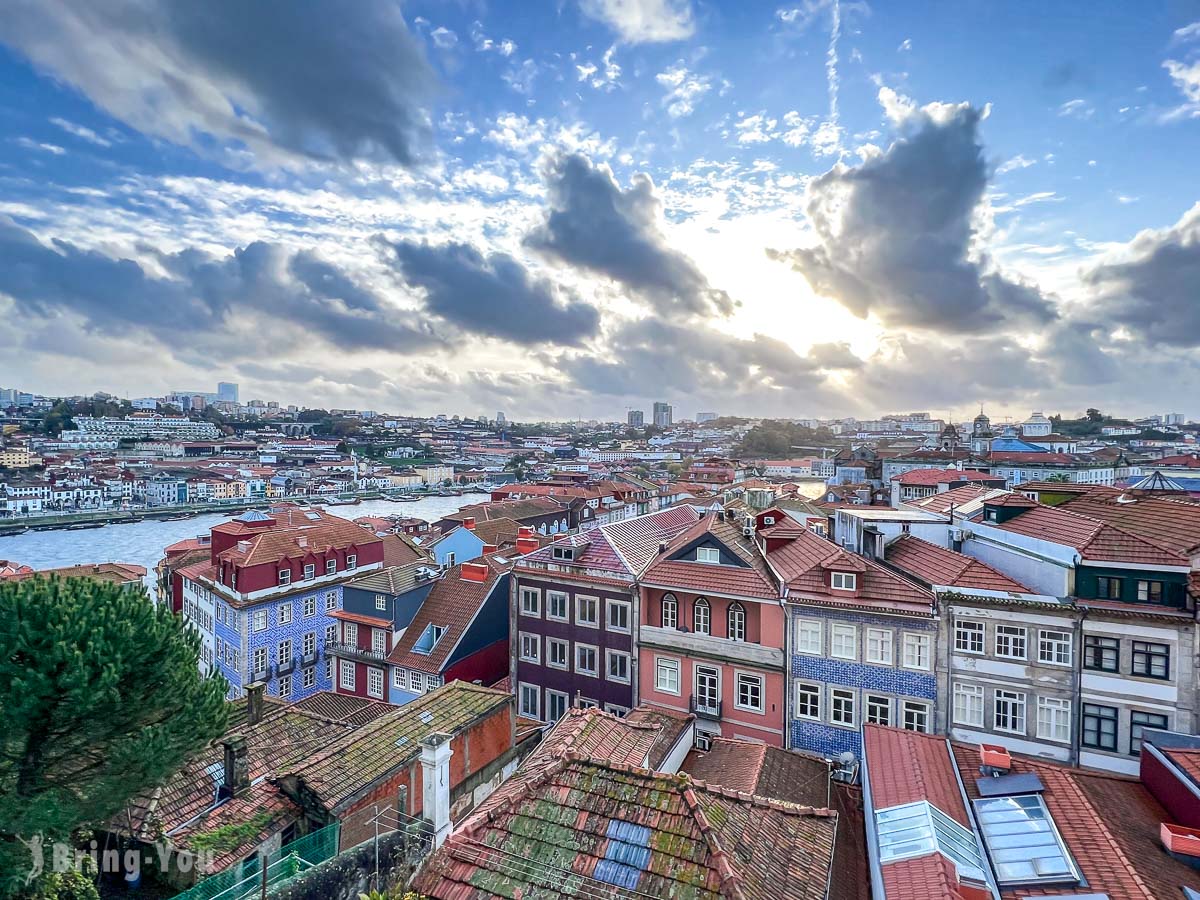
Right here, you’ll be transported to Portugal’s Age of Discovery, the golden era when Porto was a gathering place for nobility.
Popping up along the main avenues, plenty of grand mansions, churches, and cobbled streets beckon attention with their intricate carvings and beautiful blue hand-painted tiles.
The Old Quarter is undoubtedly a must-see attraction on its own and is close to São Bento – the world’s most beautiful train station. This heritage neighborhood is also home to an enchanting café where J.K. Rowling penned her first draft of Harry Potter.
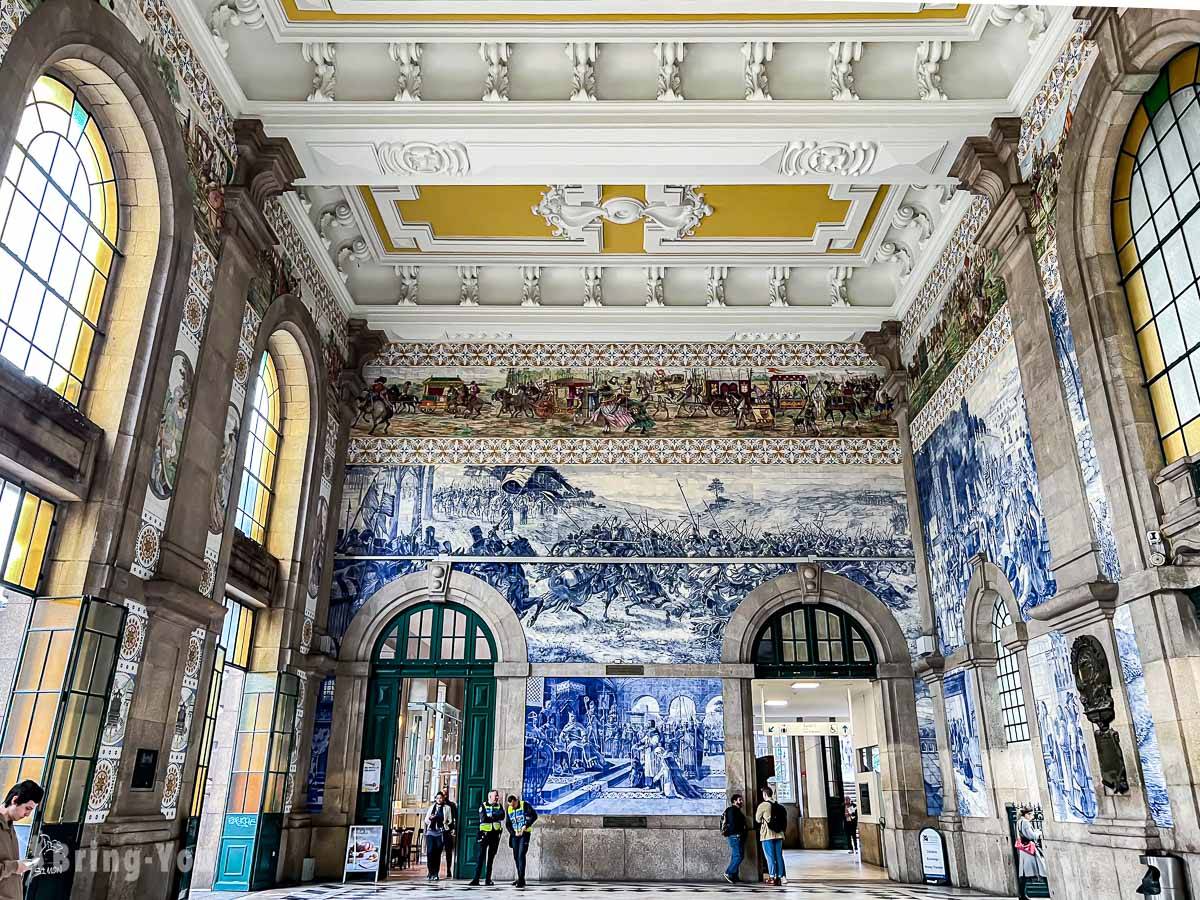
Cuisine-wise, Porto takes the world by storm with its fortified wine. Once Portugal’s wealthiest city, Porto gained fame with its wine exports. Today, you can choose one of the top-tier wineries for a wine-tasting trip. These amazing producers have been around for centuries. But if you’re short on time, a glass of Port wine at a local restaurant will fit the bill.
Read More: 15 Things to Do in Portugal: Historical Buildings, Culture, Islands, Food, Port Wine, and More
São Bento Station
Serving as the last stop of your train ride from Lisbon, São Bento guarantees to have you hooked on its marvelous architecture.
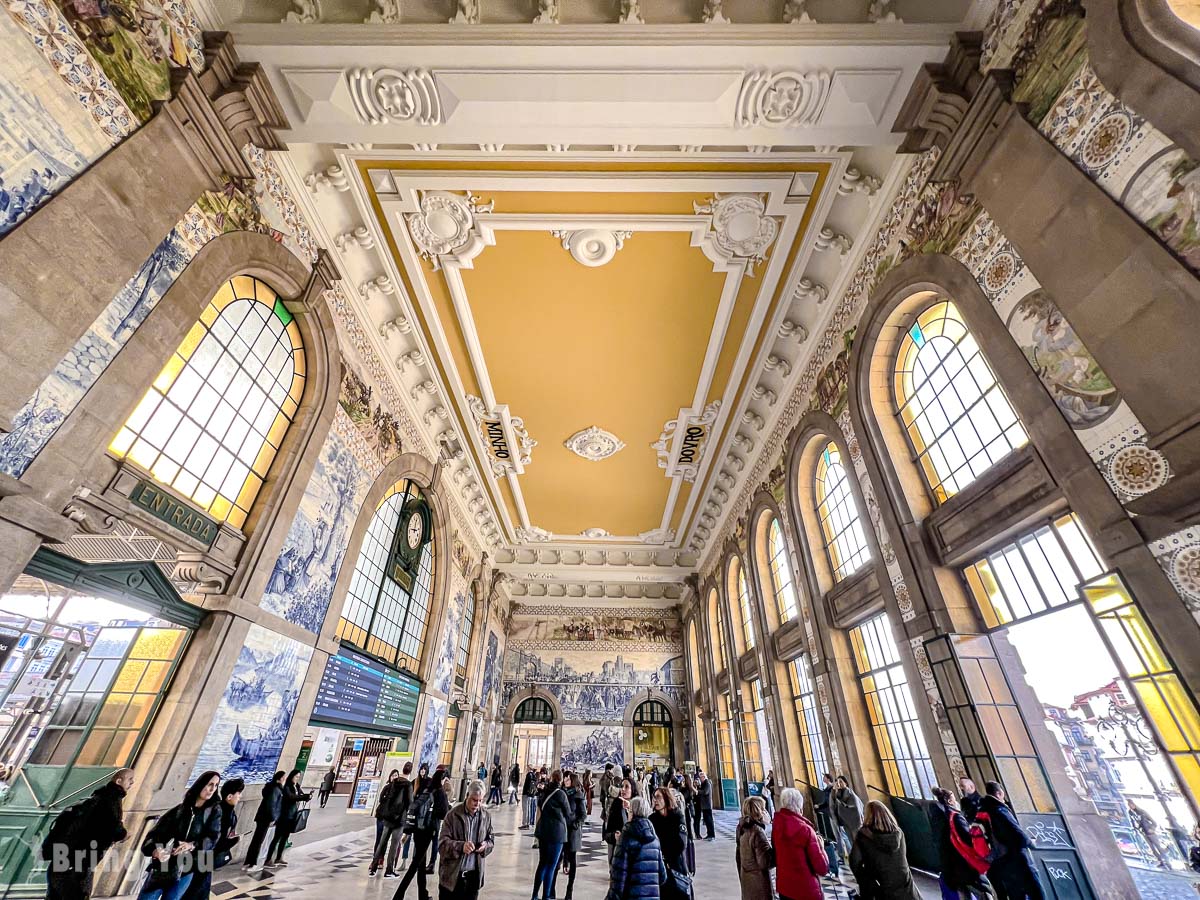
The building has been around since it first opened in 1916, though once abandoned before the government stepped in to renovate.
What truly distinguishes São Bento Station is its breathtaking blue and white tile art. The locals refer to this amazing exquisite style as Azulejo. Each tile comes together to create a huge masterpiece as a whole, depicting various scenes from palaces and wartime moments to church life and rural existence.
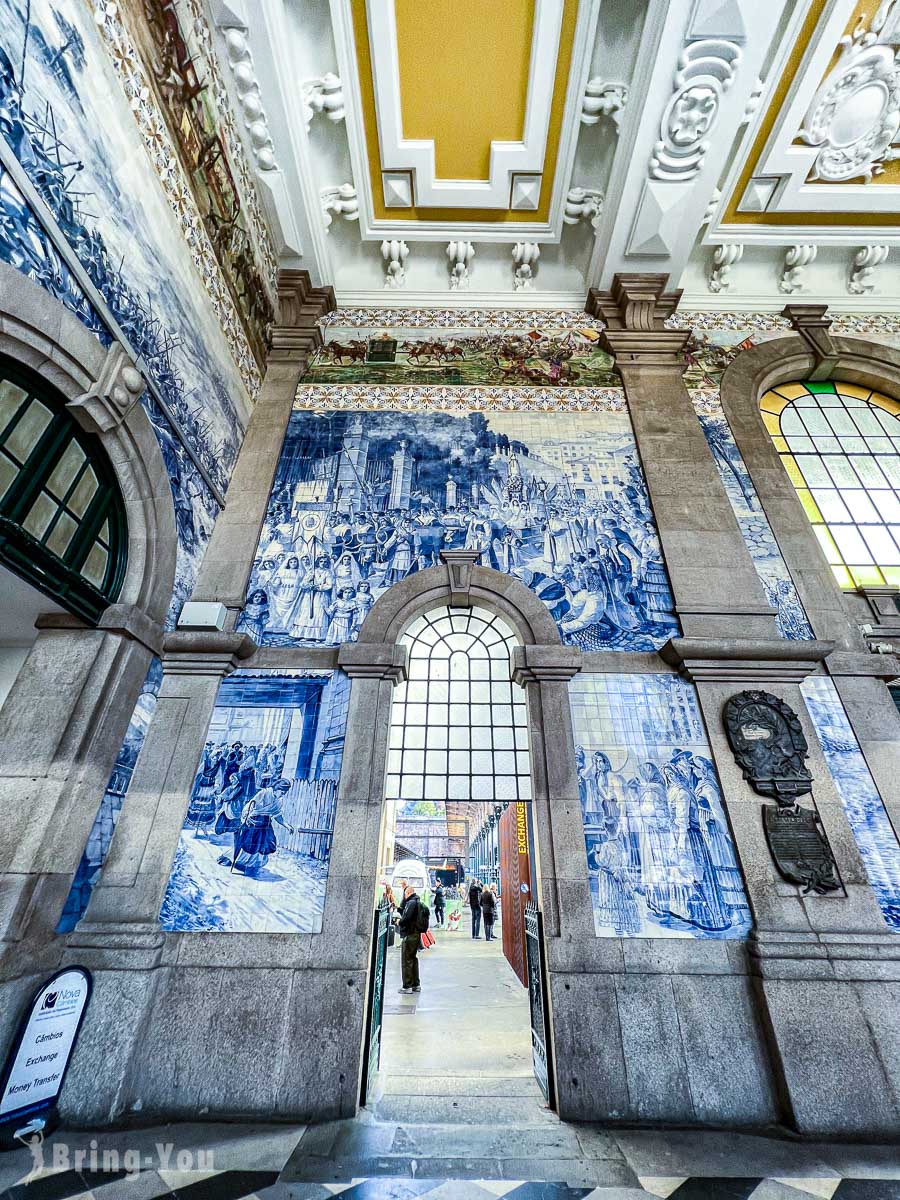
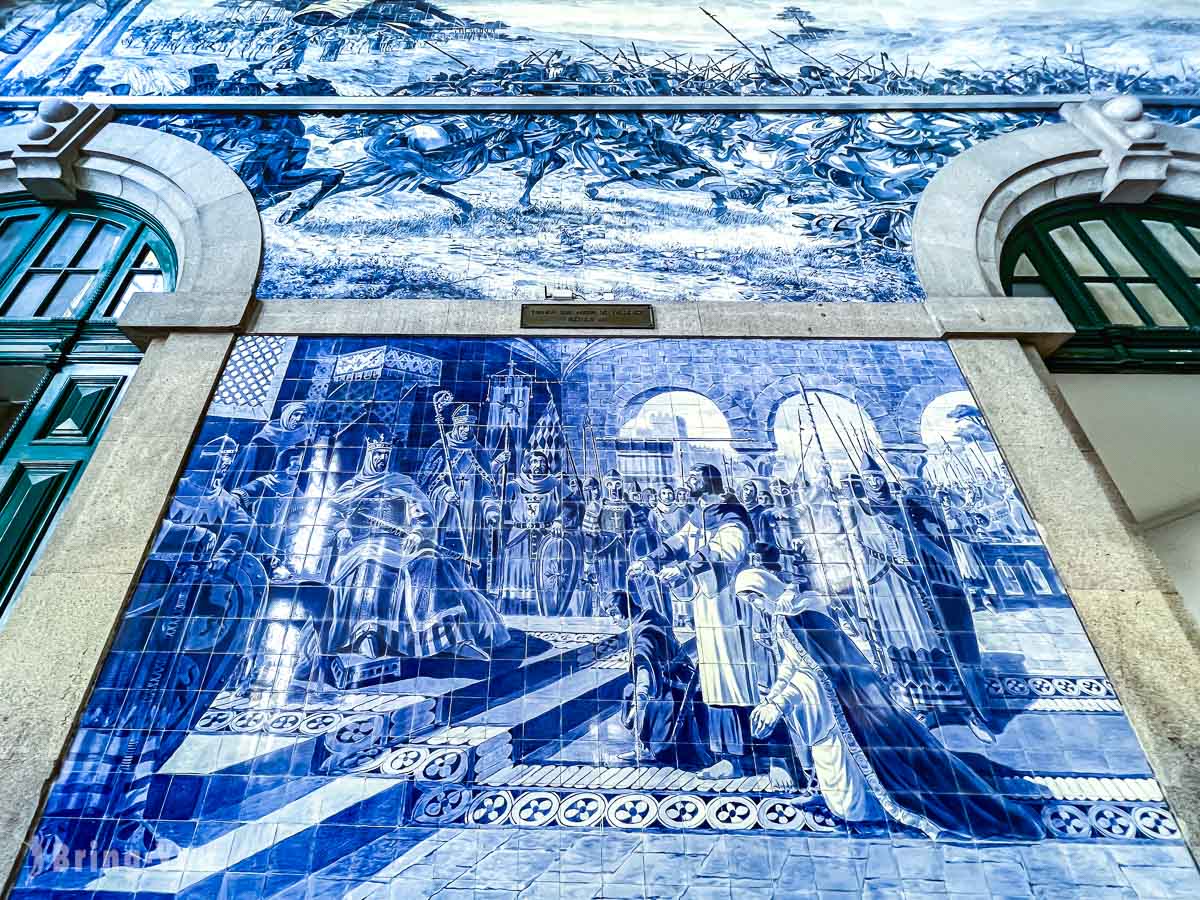
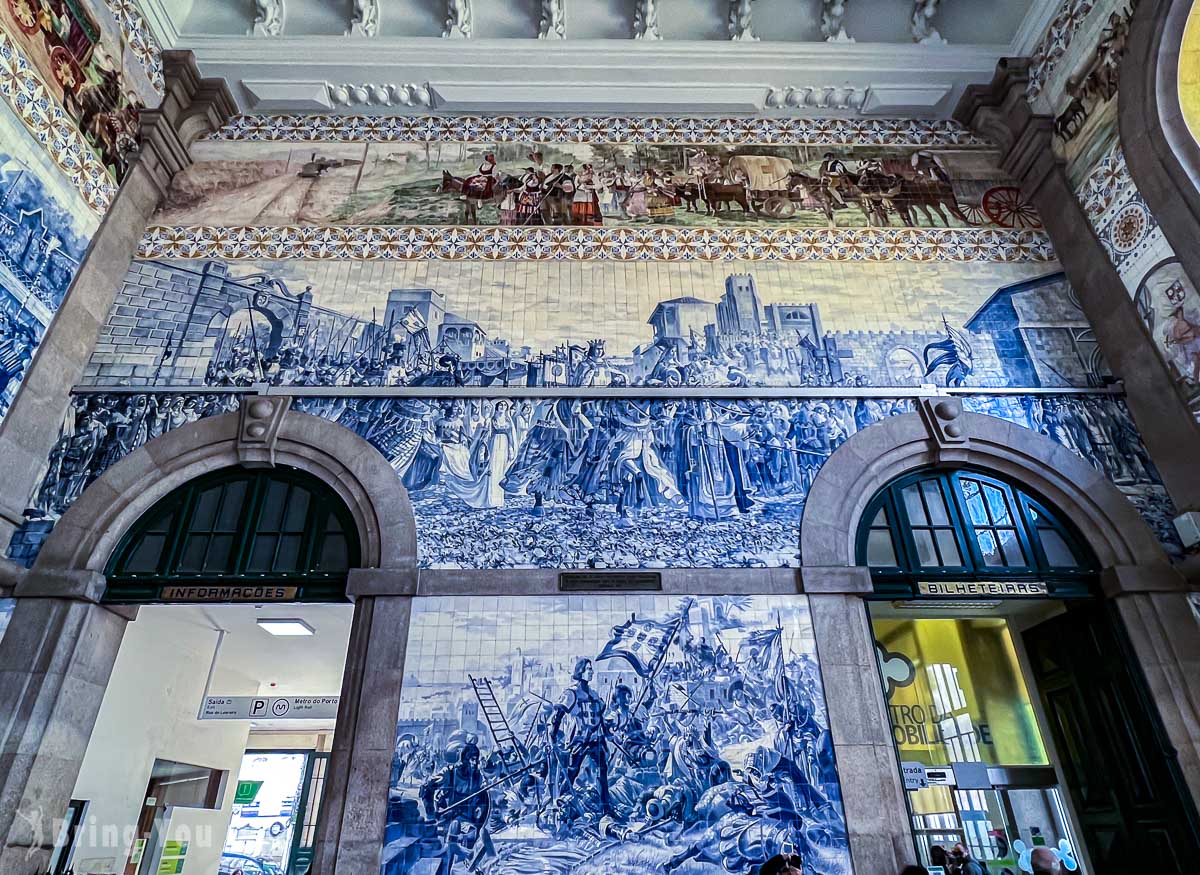
McDonald’s Imperial Porto
Just a minute’s walk around the crossroad from São Bento Station, you’ll end up at one of the coolest McDonald’s spots in the world. Get your camera ready! This 1995-opened McDonald’s Imperial is built on the skeleton of a historic 1930s building – and it promises to leave you in awe.
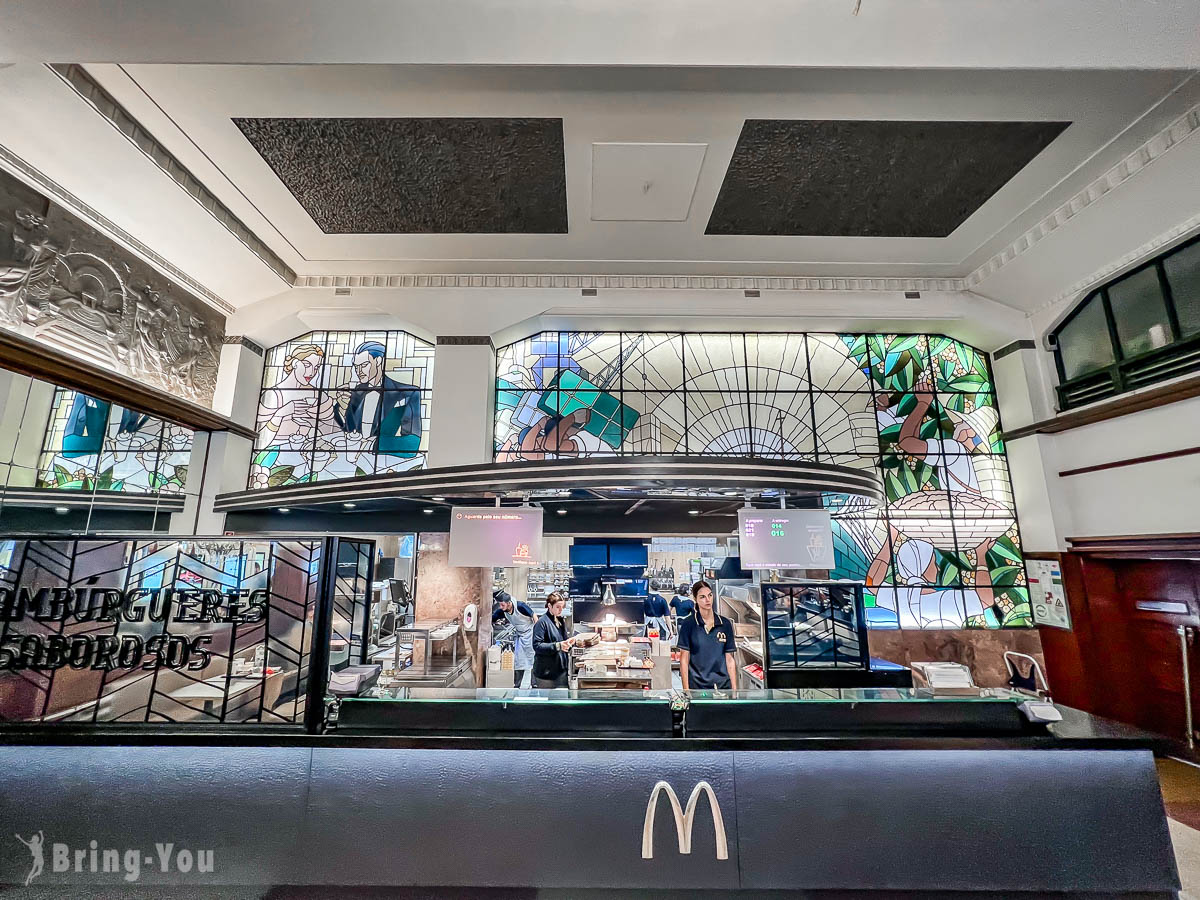
Boasting an impressive, marvelous design, the resto is a show-stopper when it comes to Insta-ready shots, preserving its iconic elements and reviving the once-vibrant social atmosphere.
The name “Imperial” is a nod to the prominent eagle on the facade, where you’ll also discover stunning art deco-stained glass.
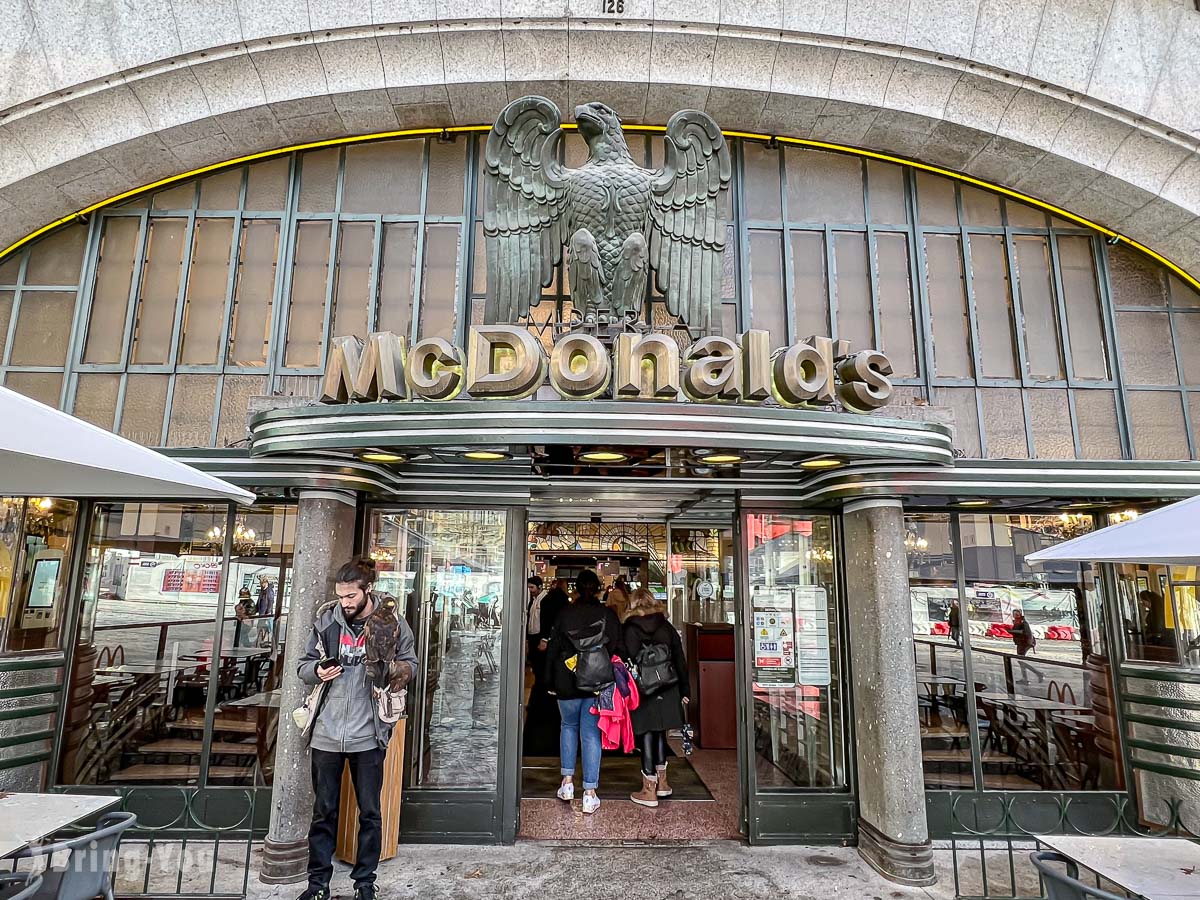
Getting hungry in the middle of the day? Well, step inside for a tasty bite but don’t forget to look up because the ceilings and chandeliers are truly beautiful!
Praça da Batalha – Batalha Square
Take it easy and wind down at the bustling social gathering point of Batalha Square. Right here, the elegant baroque church of Santo Ildefonso draws crowds with its twin bell towers and the lavishly romantic São João National Theater.
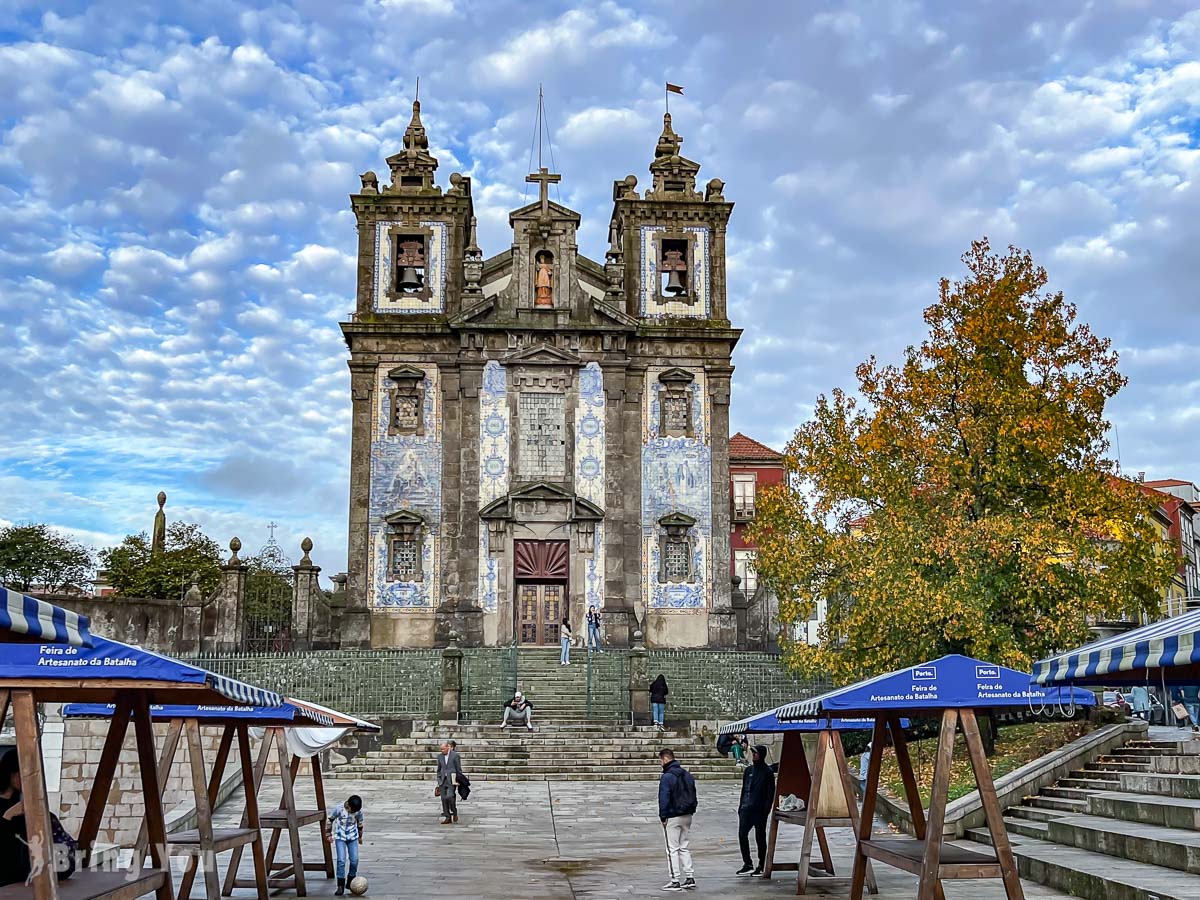
Look around and you shall see an amazing mashup of charming heritage buildings, ranging from the National Theatre, upscale hotels, and lovely cafes, to the No. 22 vintage tram passing through.
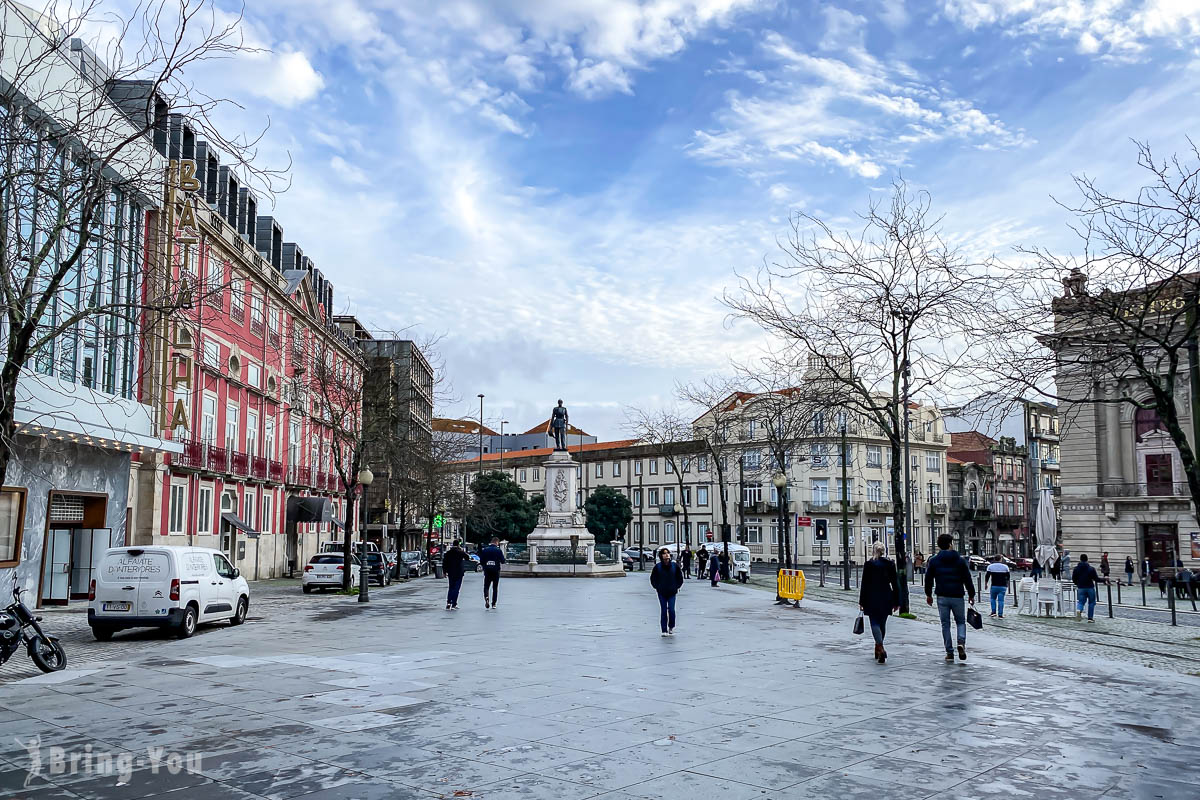
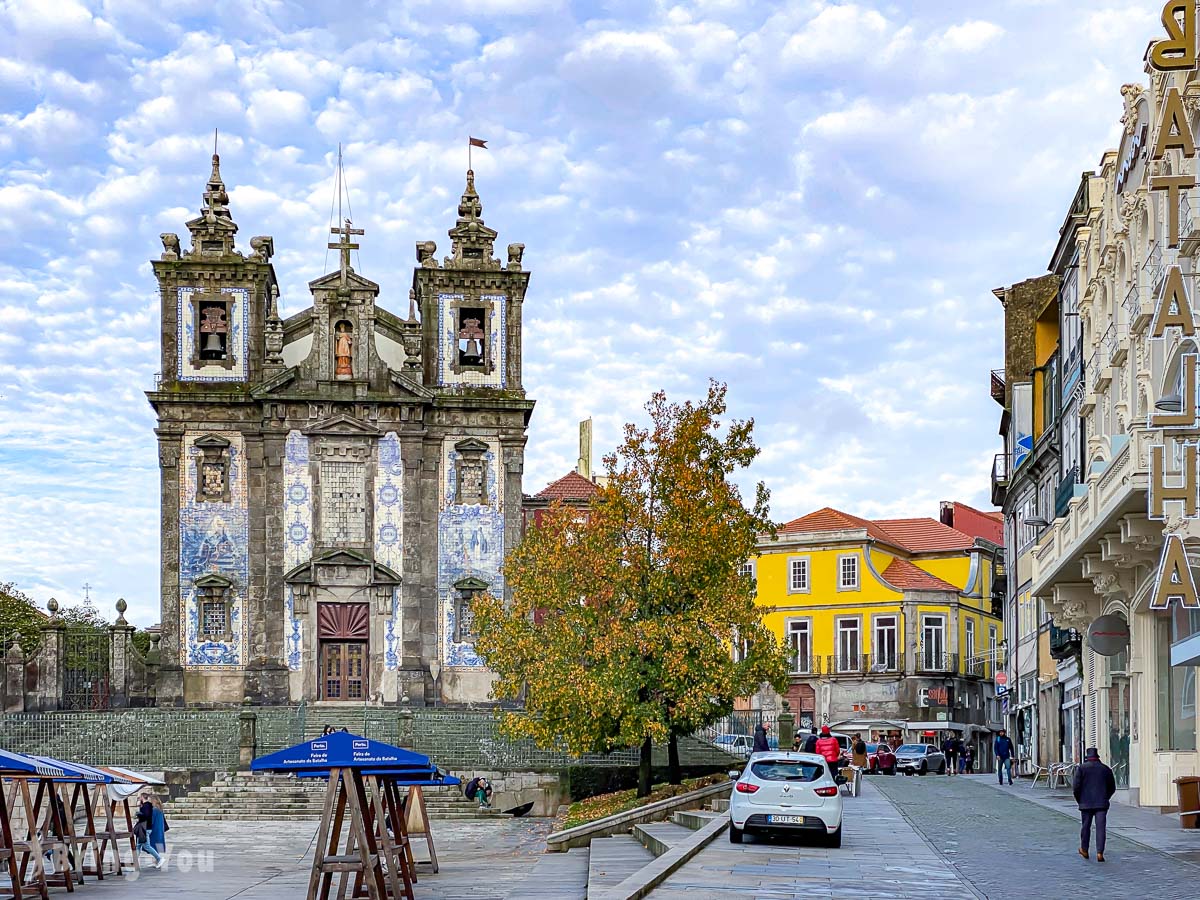
Church of Saint Ildefonso
Out of these timeless pieces of architecture surrounding Batalha Square, the Church of Saint Ildefonso is one of the most talked-about gems.
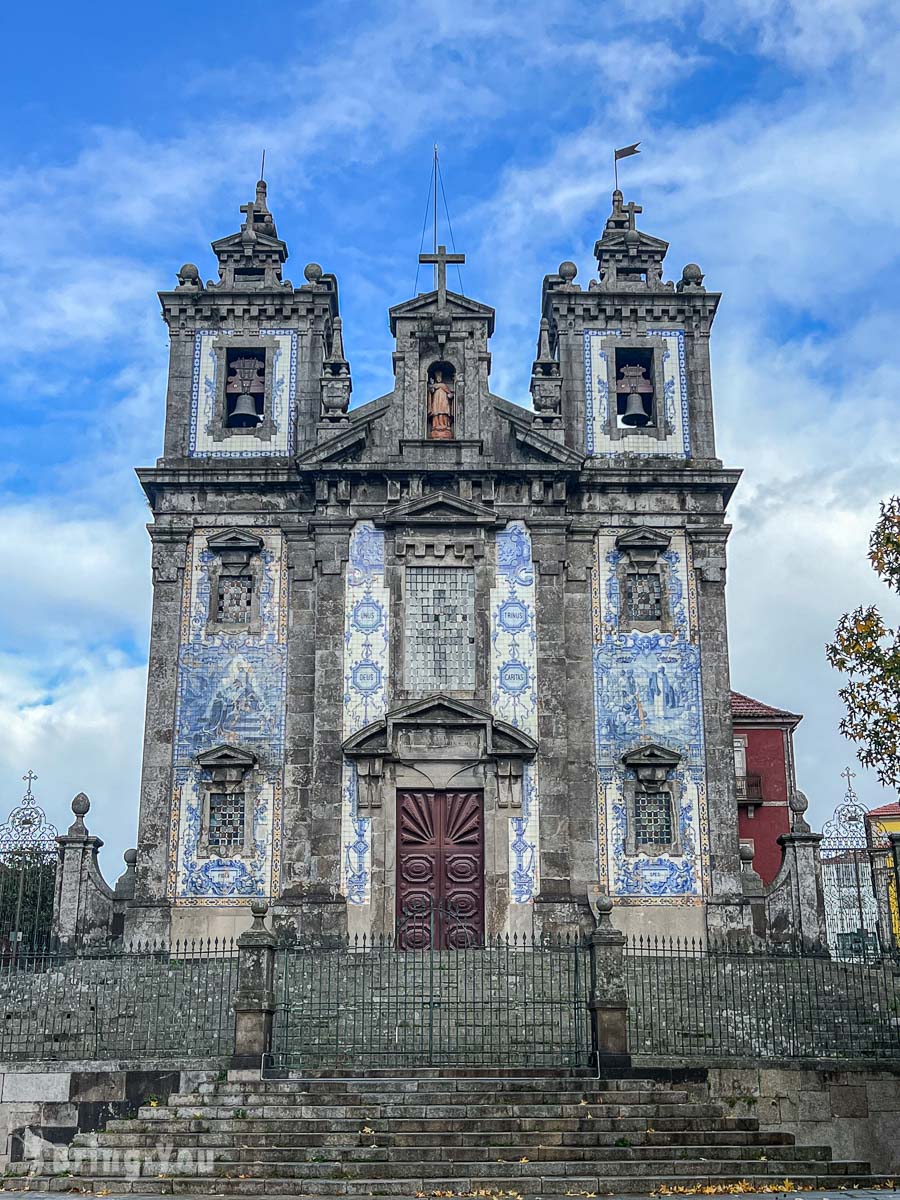
The rustic yet intricate facade makes a statement with blue porcelain paintings on its outer walls. This Baroque Catholic church dates back to the 18th century.
Before the Church of Saint Ildefonso came around, a smaller church sat on the same spot but was soon knocked down due to its poor condition. Since then, the construction of the Church of Saint Ildefonso began shortly after in 1709 and it took three decades to complete.
Due to its massive reputation, the crowds keep flocking here so make sure to visit early in the morning to capture its photogenic angles.
If you want to explore the interior, the entrance fee is only EUR 1, very reasonable.
Chapel of Souls
In less than a 10-minute walk northeast of the Church of Saint Ildefonso, the Chapel of Souls is another highlight in the main shopping street of the Old Quarter.
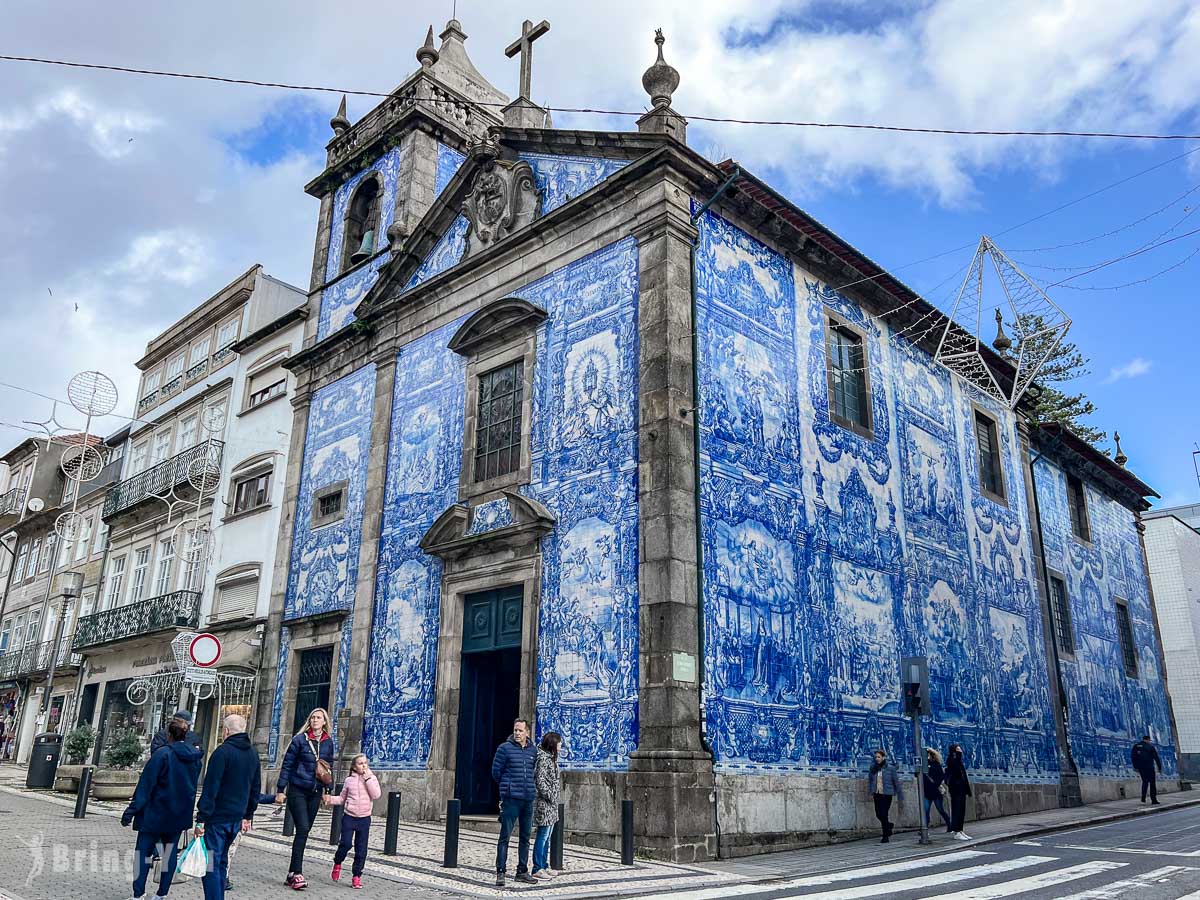
In the 20th century, the little chapel’s walls were adorned with over 16,000 blue porcelain tiles, depicting various Bible stories.
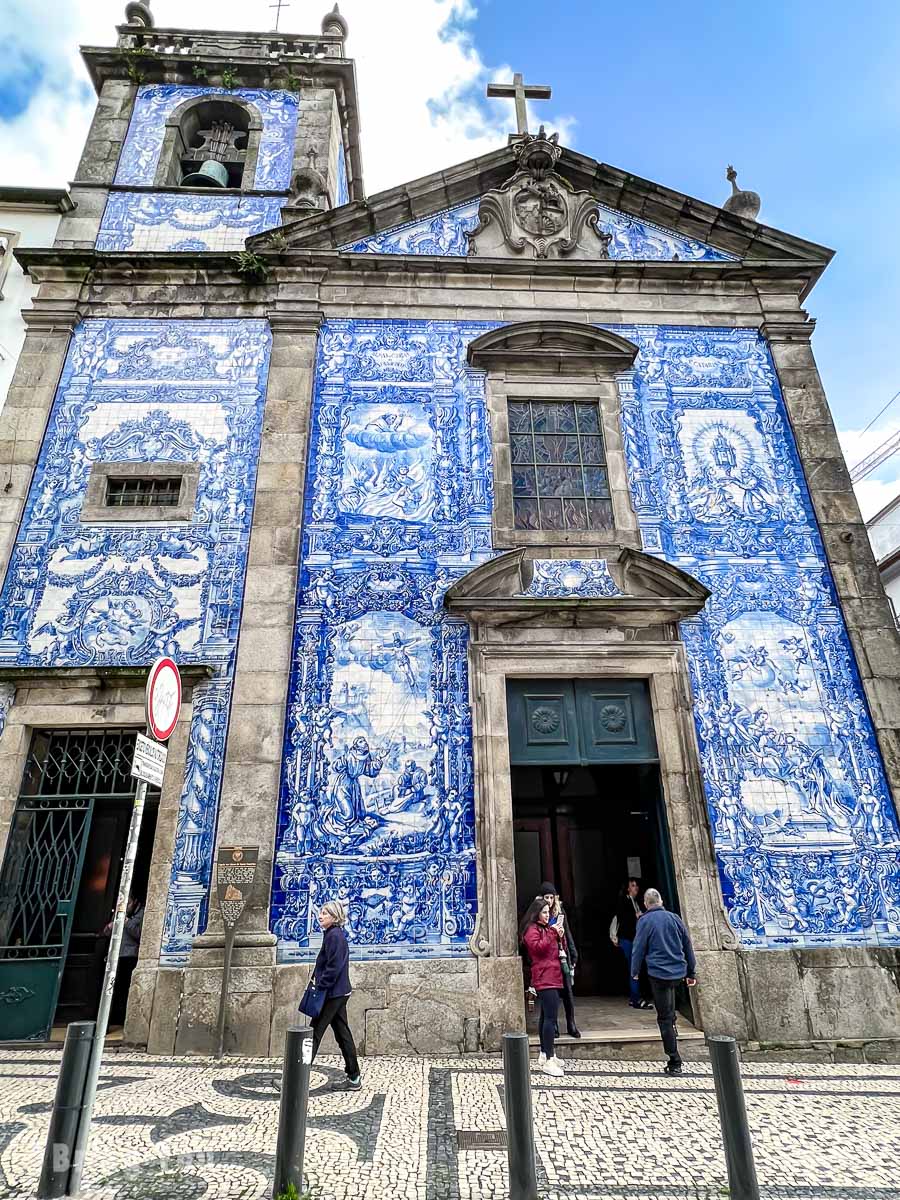
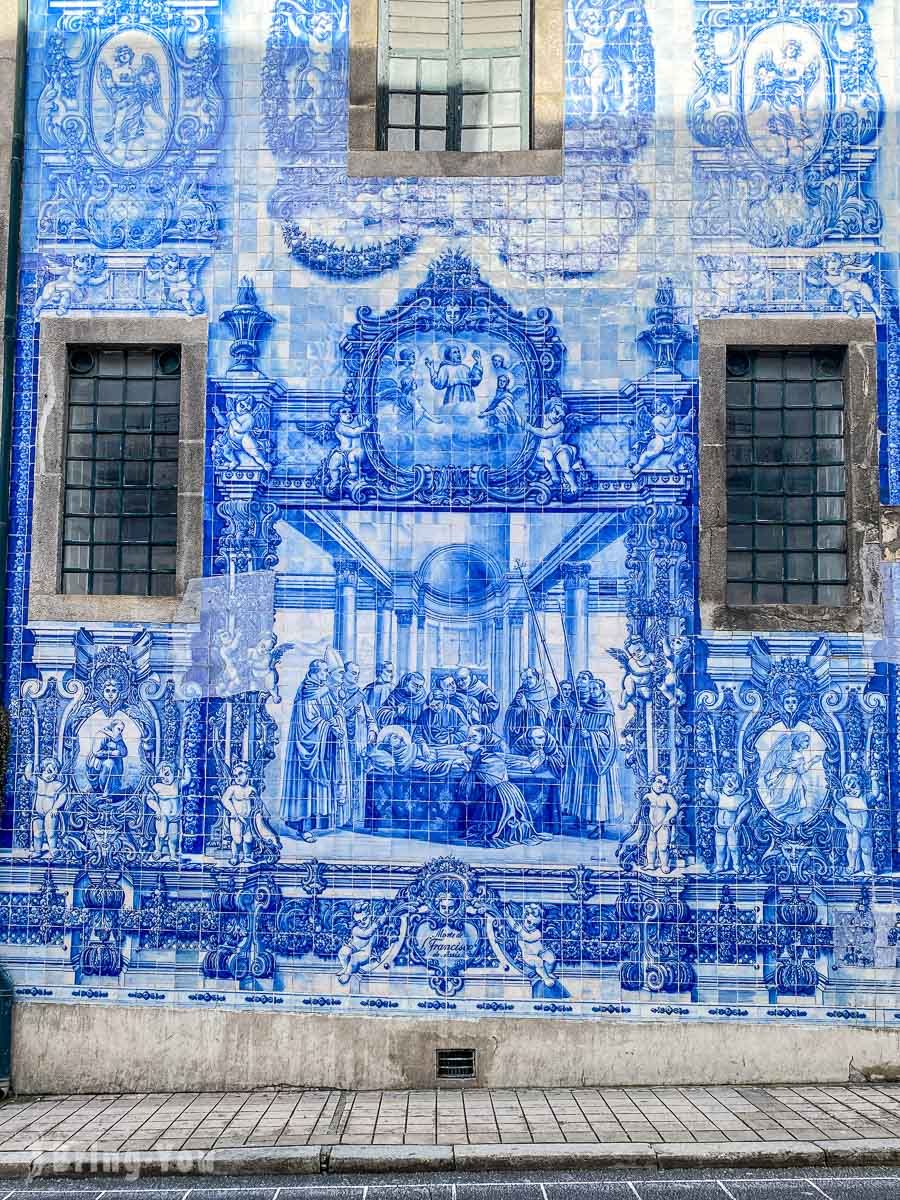
Though famous, no tickets are required to visit the chapel. The only thing that may hold you back in doubt is the steep terrain that demands a short hike uphill to get there.
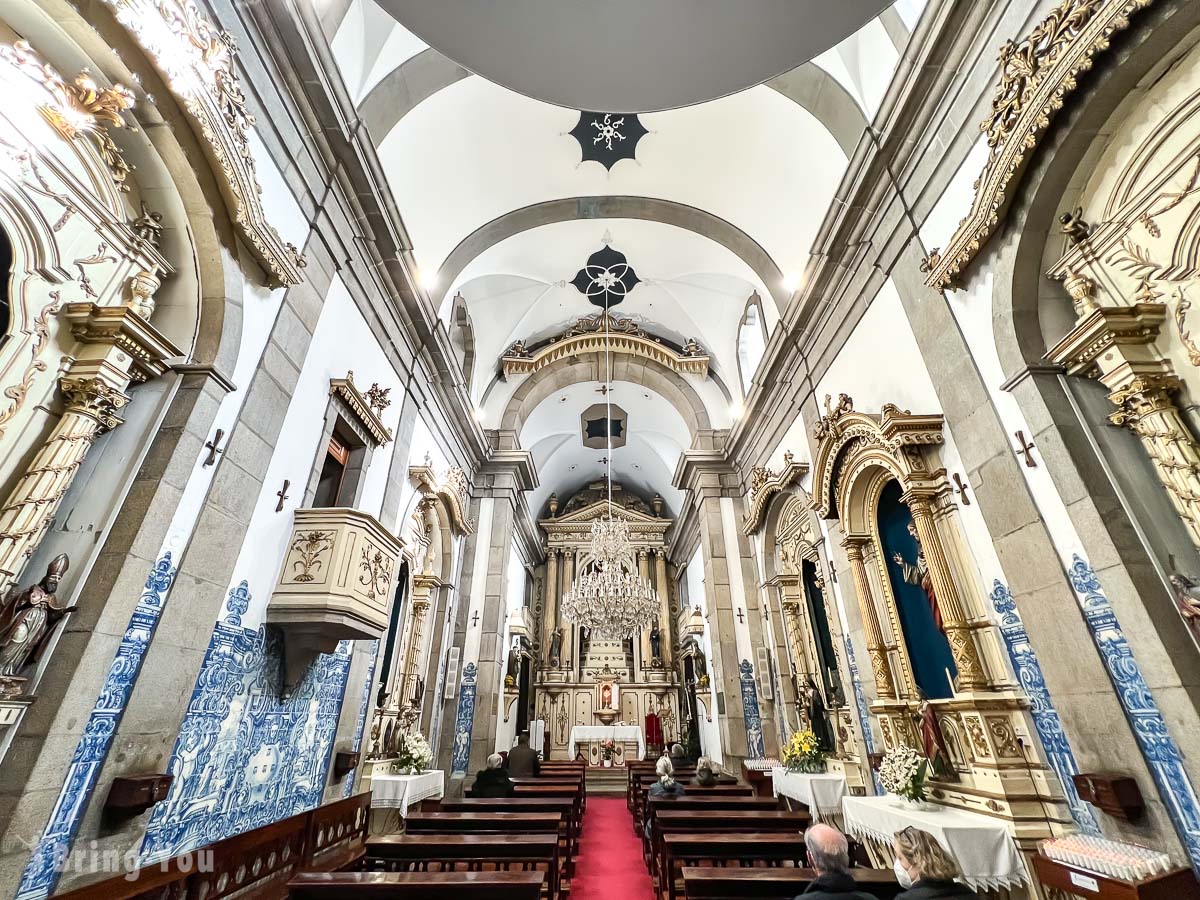
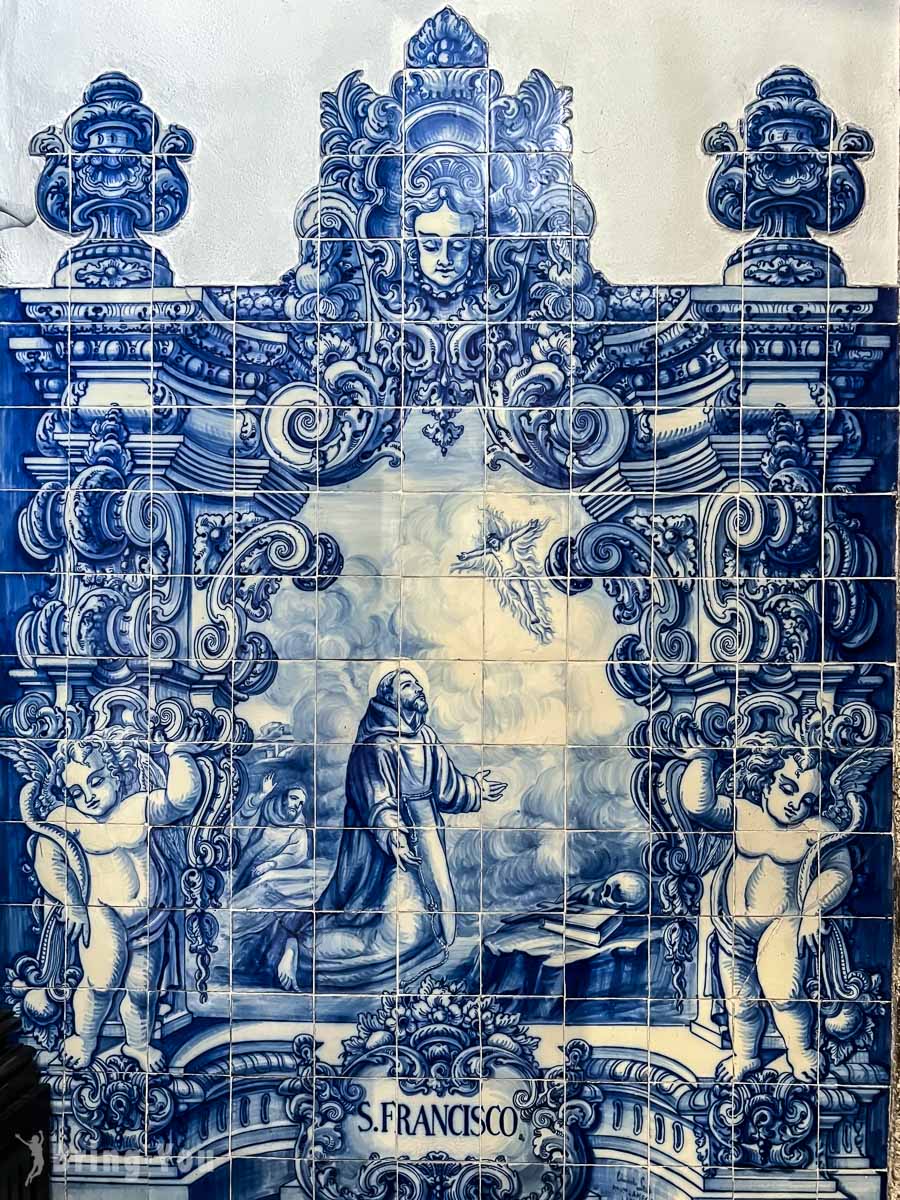
Majestic Café
As the heat gets in the way, spend your noon at Majestic Café. It’s consistently ranked among the world’s top ten most beautiful cafes, welcoming the first visitors in 1921.
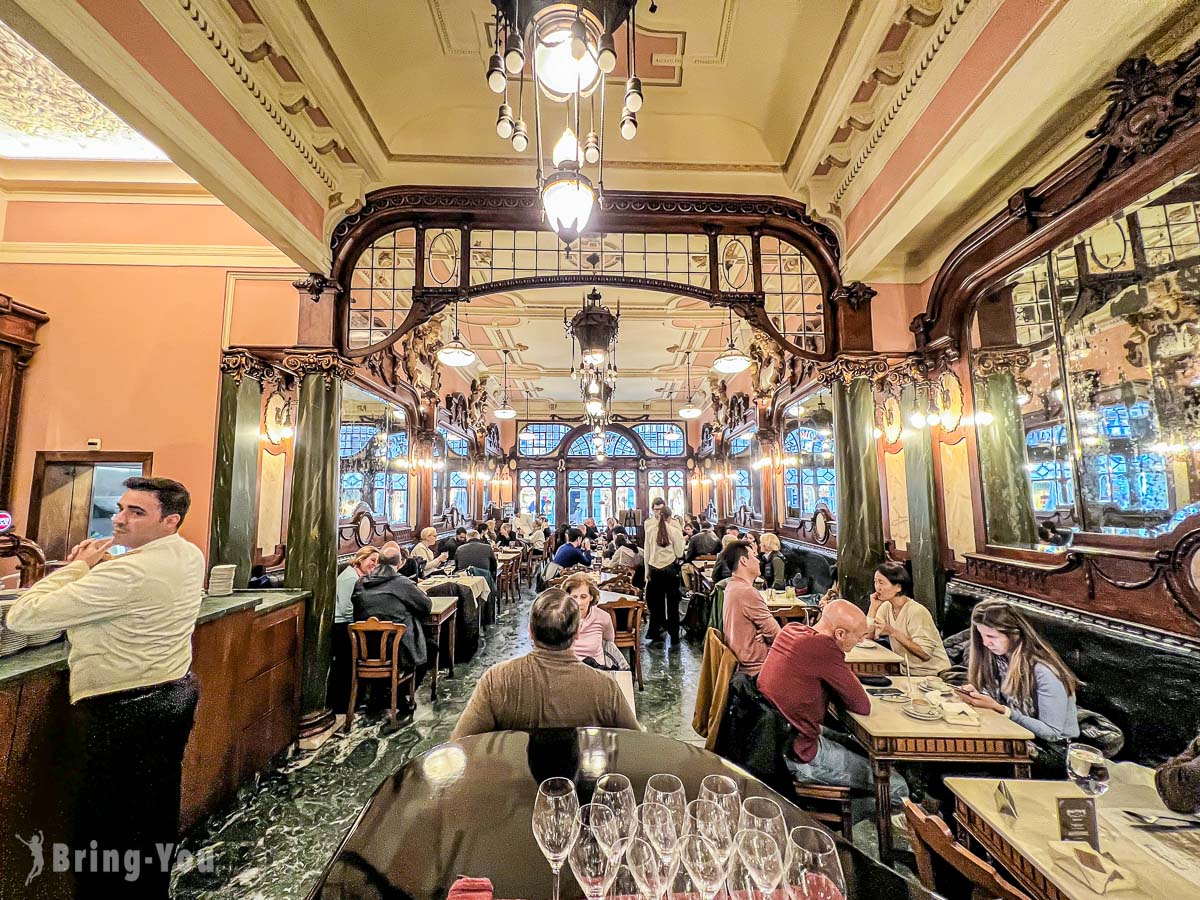
The café’s exterior is striking, but the real magic happens once you step inside. The rich history has made its name as this lovely getaway was once the preferred haunt of the city’s elite, attracting writers, politicians, artists, and intellectuals.
That includes J.K. Rowling and her famous novel Harry Potter.
Right here, Rowling spent days building the first three chapters of her book called Harry Potter and the Philosopher’s Stone.
Sadly, with time, neglect took its toll, and the café lost some of its former glory. The opulence of the “la belle époque” era faded into carelessness.
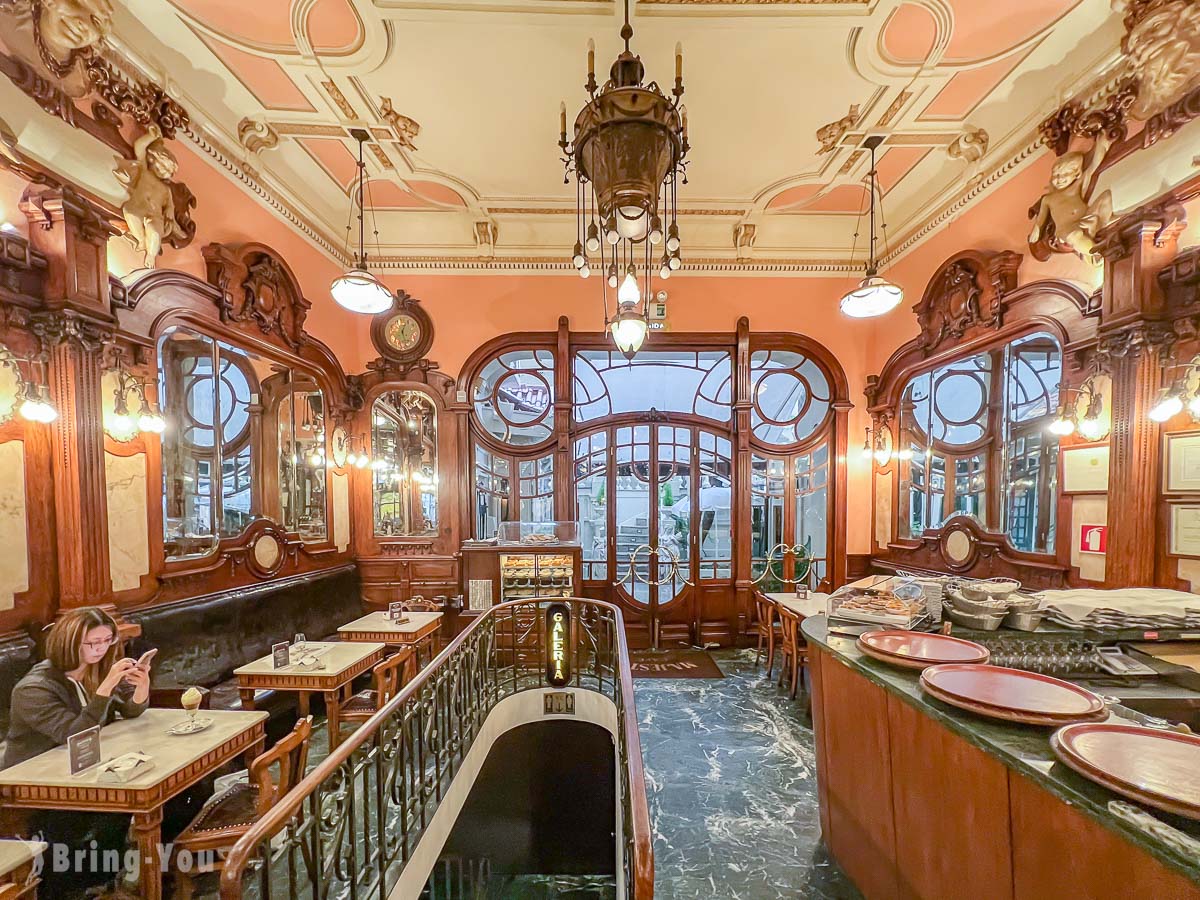
However, a visit in the modern days is still worth every penny, especially when it comes to the epic selection of food and drinks. Here, you can find everything from coffee and pastries to salads, fish, and desserts.
Câmara Municipal do Porto Town Hall
Following my bucket list of Porto’s grand architecture, the town hall of Câmara Municipal do Porto captures looks with its elegant facade.
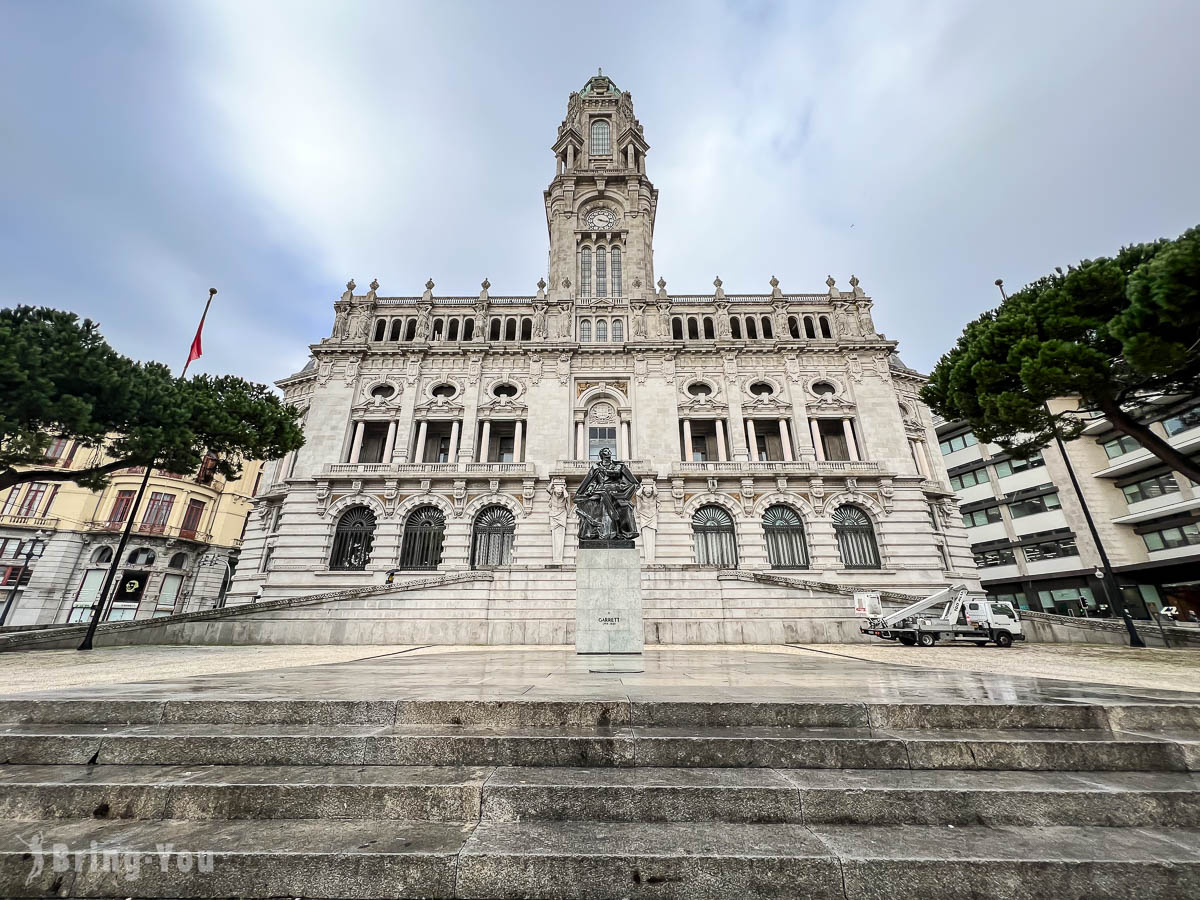
Just a minute’s walk from Majestic Cafe, the bold building looms out with its whooping 70-meter-high central tower, holding a clock with a music box inside.
Walk to the first floor and you’ll see an oval plaster medallion adorned with laurel leaf garlands and an inscription paying tribute to Almeida Garrett.
Garrett was a multi-talent figure known for his active roles as a writer, diplomat, orator, theatre reformer, and pioneer of Romanticism in Portugal.
Porto Cathedral – Sé do Porto
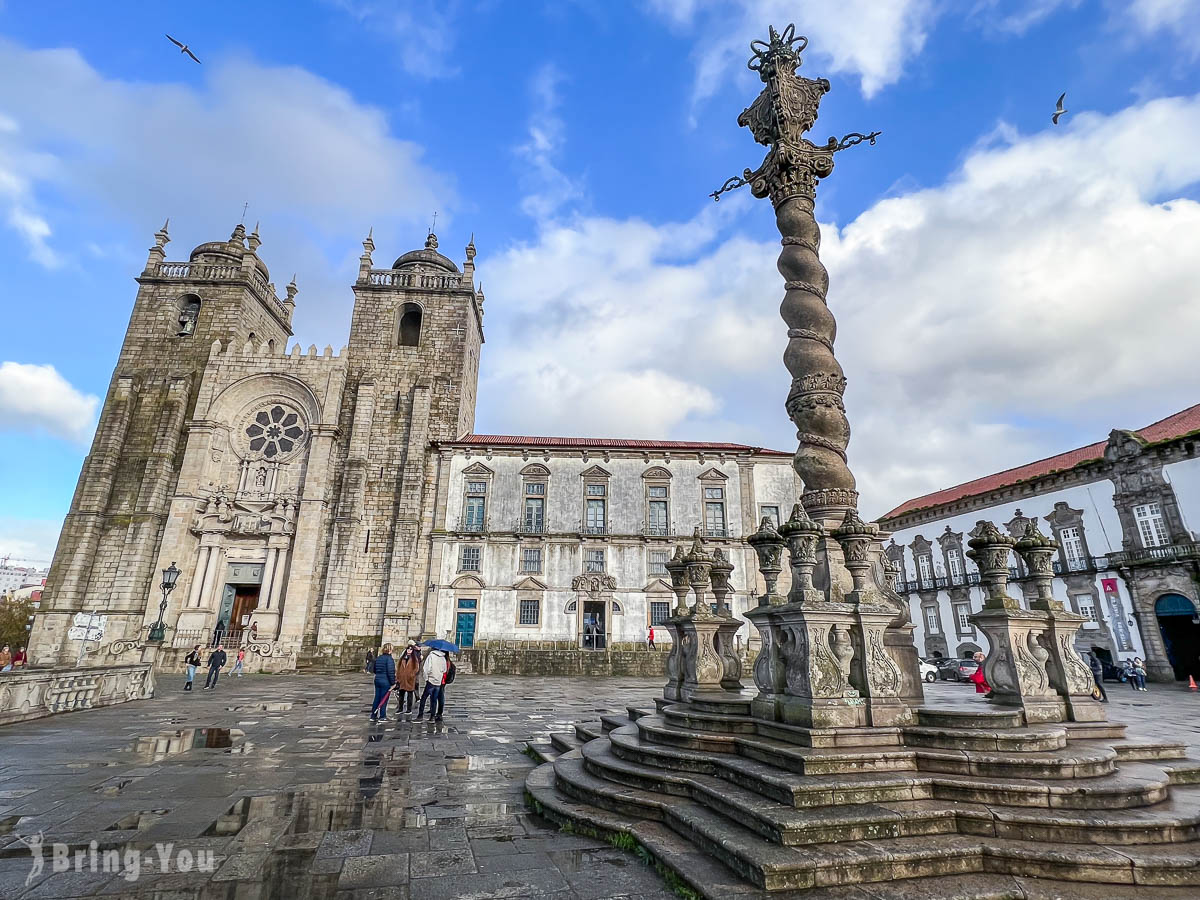
Perched atop a hill overlooking the city and river, the Sé Cathedral is Porto’s most significant religious structure. The church leans its back against the city walls, boasting a bold, impressive fortress-like appearance.
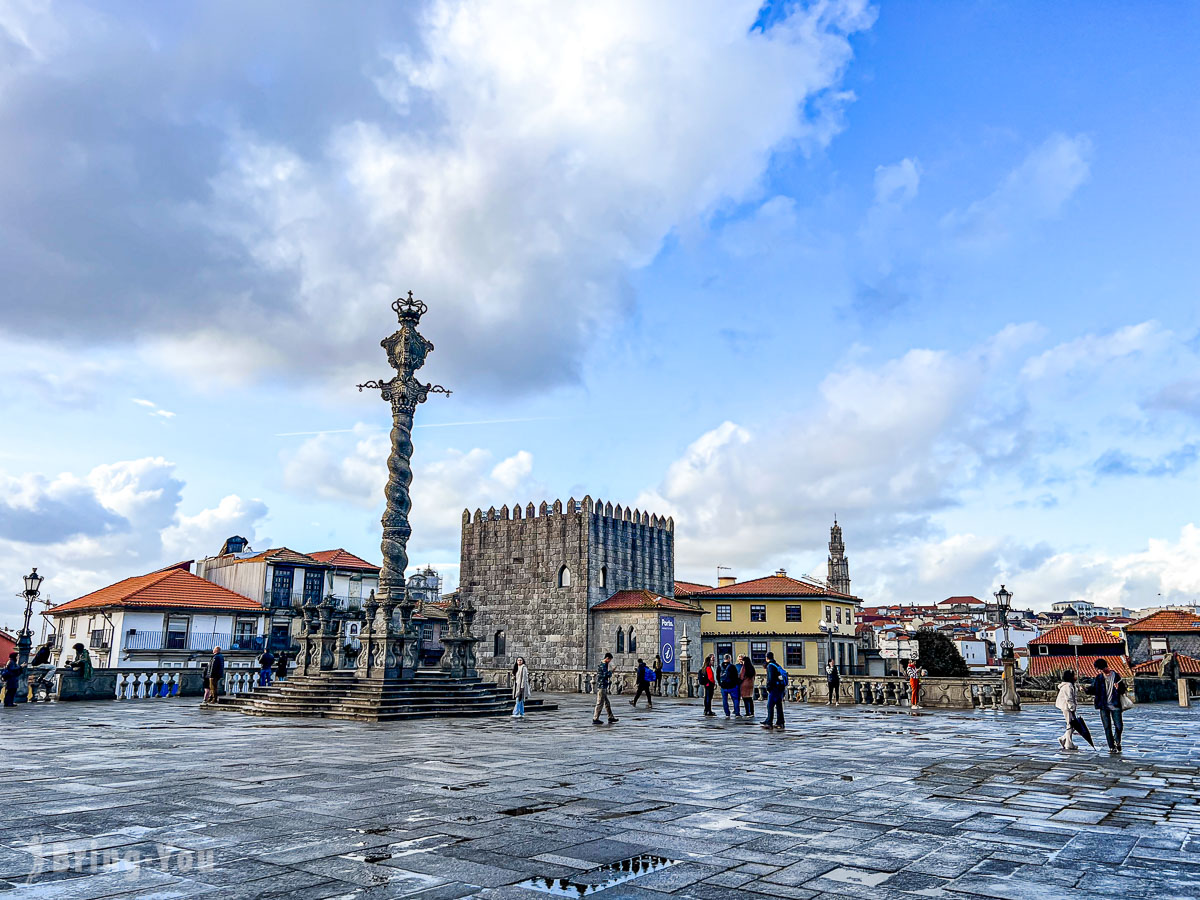
Porto Cathedral took root in the 12th century. Ever since the church has undergone multiple renovations before bringing out an excellent blend of design styles as seen today.
The most noticeable feature is the Baroque exterior with hints of Romanesque elements and the Gothic touches found in the cloister and one chapel.
Episcopal Palace
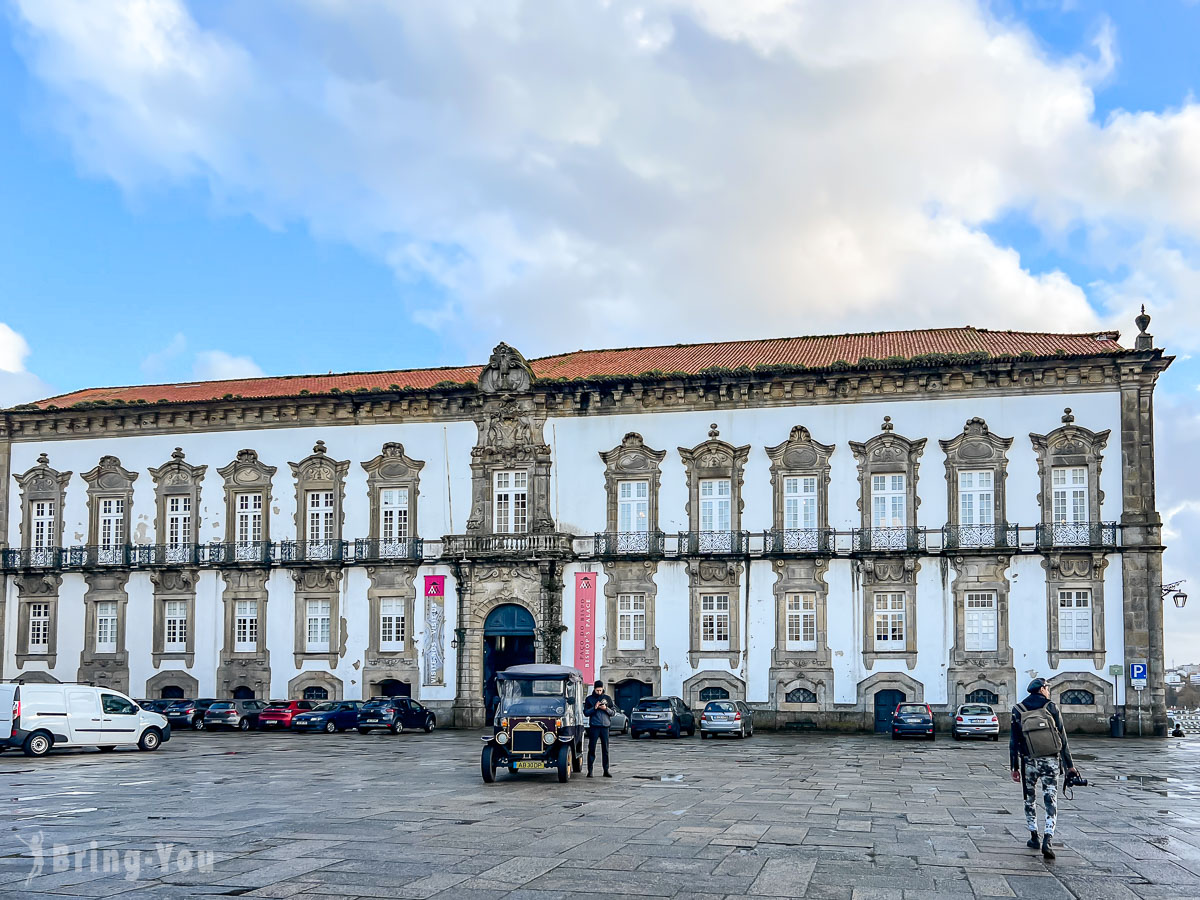
Right next to the Cathedral stands the Porto Bishop’s Palace. It was recognized as a UNESCO World Cultural Heritage Site.
The palace served as a private living chamber for the bishop in charge of the nearby Porto Cathedral.
Episcopal Palace came around somewhere between the 12th and 13th centuries, showcasing a mix of Baroque and Rococo styles. After hundreds of years, the impressive heritage building has hosted numerous Portuguese royal weddings.
Luís I Bridge
Luís I Bridge soars through the mighty Douro River, making a statement with two gigantic tiers serving the metro on one level and other means of public transport on the other.
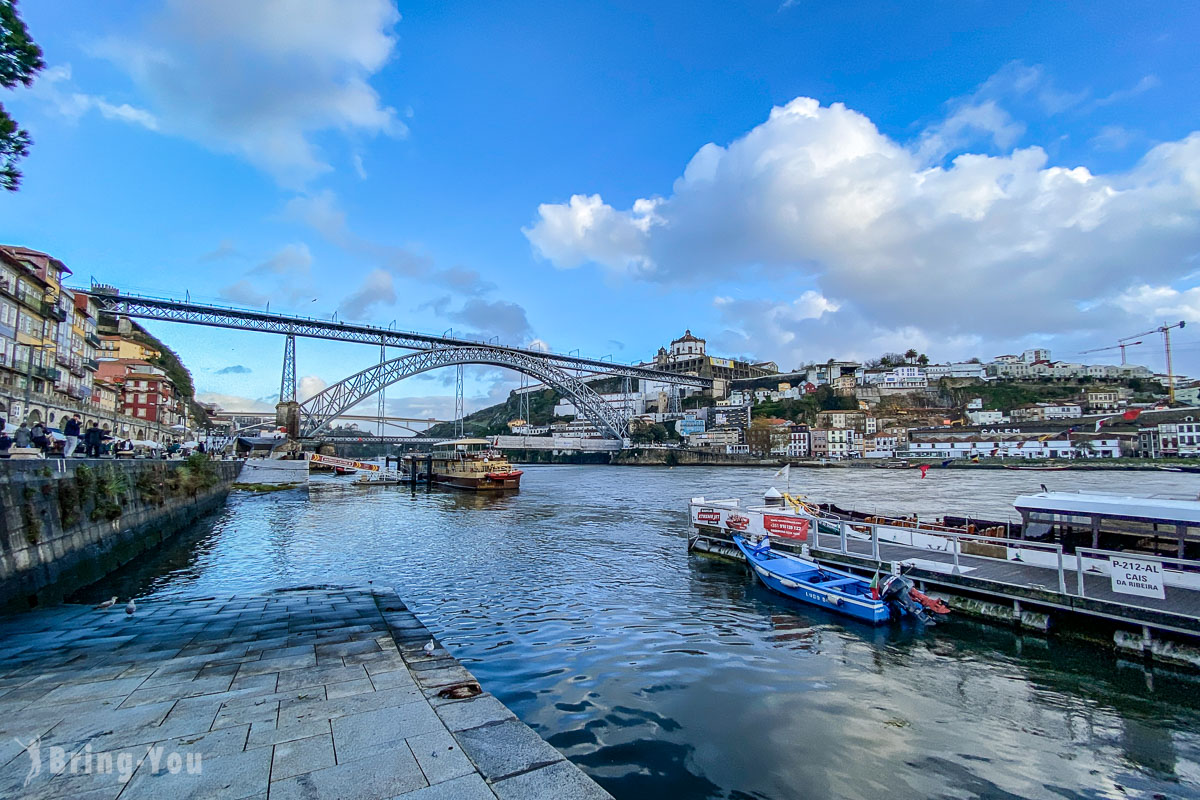
Thanks to its central location, the bridge serves as an impeccable backdrop to soak up the view. For that reason, it has become a perfect symbol of Porto.
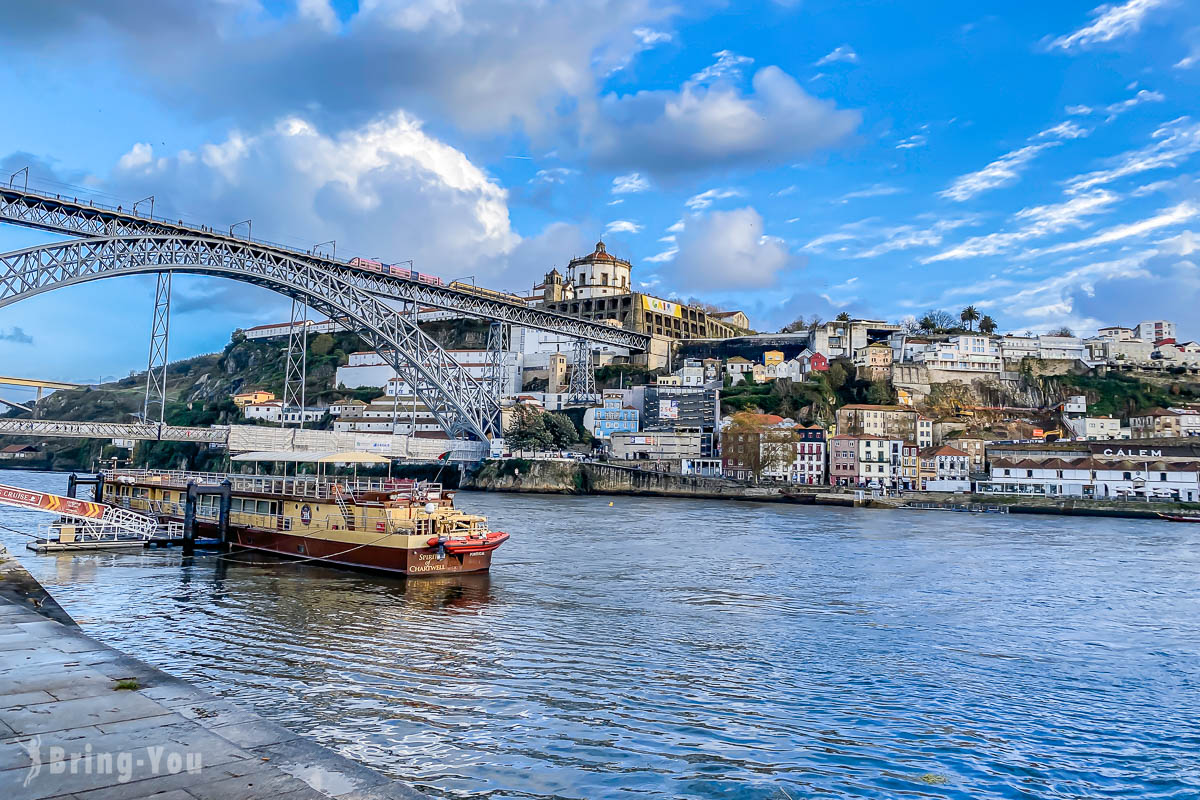
To capture the best angle of the bridge, check out Cais da Ribeira de Gaia on the south bank or the Pilares Ponte Pênsil historical landmark on the northern foot of the bridge.
Livraria Lello Library
From train station to grand cafe, Porto keeps surprising visitors with imposing titles as the world’s best of its kind.
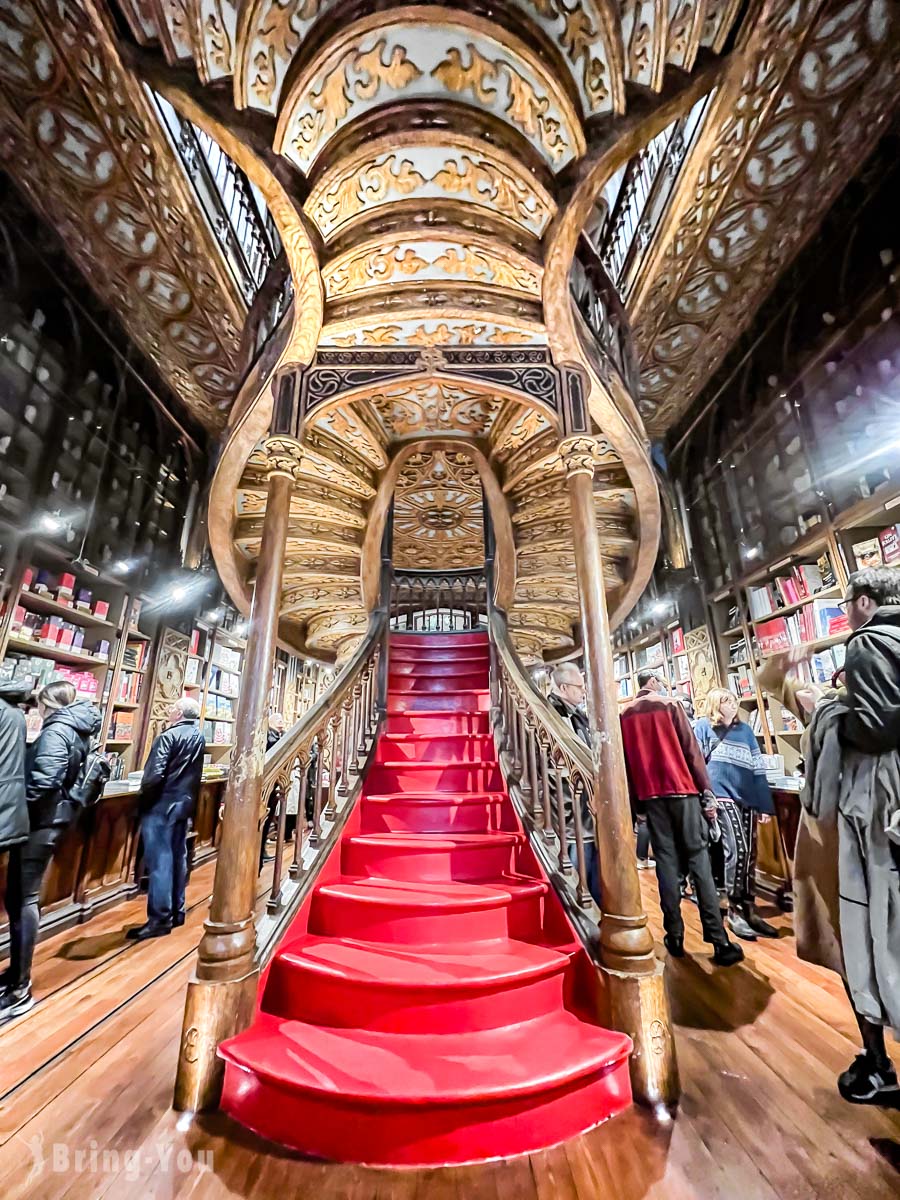
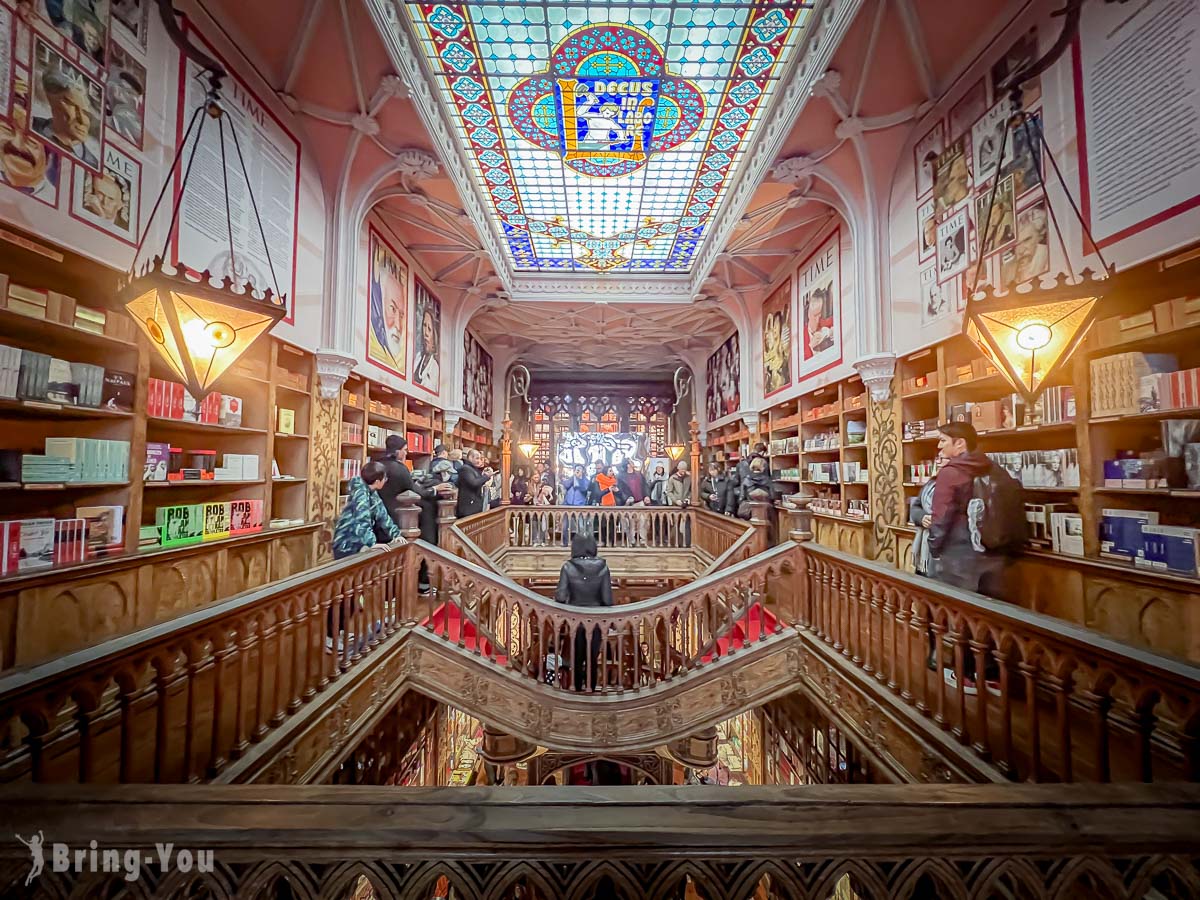
It goes the same way for Livraria Lello – one of the most visited and beautiful bookstores I’ve ever seen.
Its famous red double spiral staircase is believed to have inspired J.K. Rowling’s magical Hogwarts staircase in Harry Potter.
I adore the exquisite carvings, dramatic red hues, and elegant arc designs that seem to pair so well together.
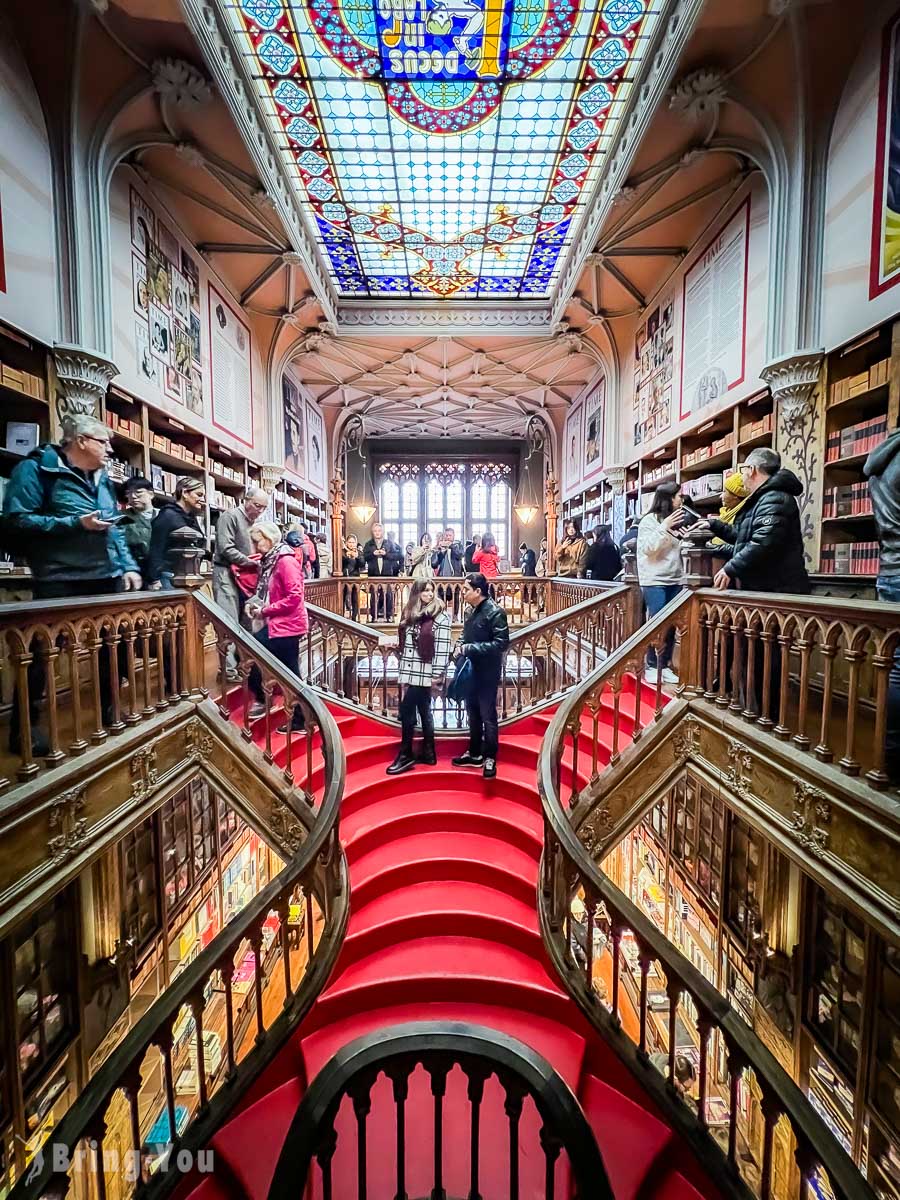
Torre dos Clérigos – Church of Clérigos
A short five-minute walk from São Bento Central Station, the iconic Clérigos Tower juts out from the corner of R. de São Filipe de Nery, waiving bypassers from the 76-meter height.
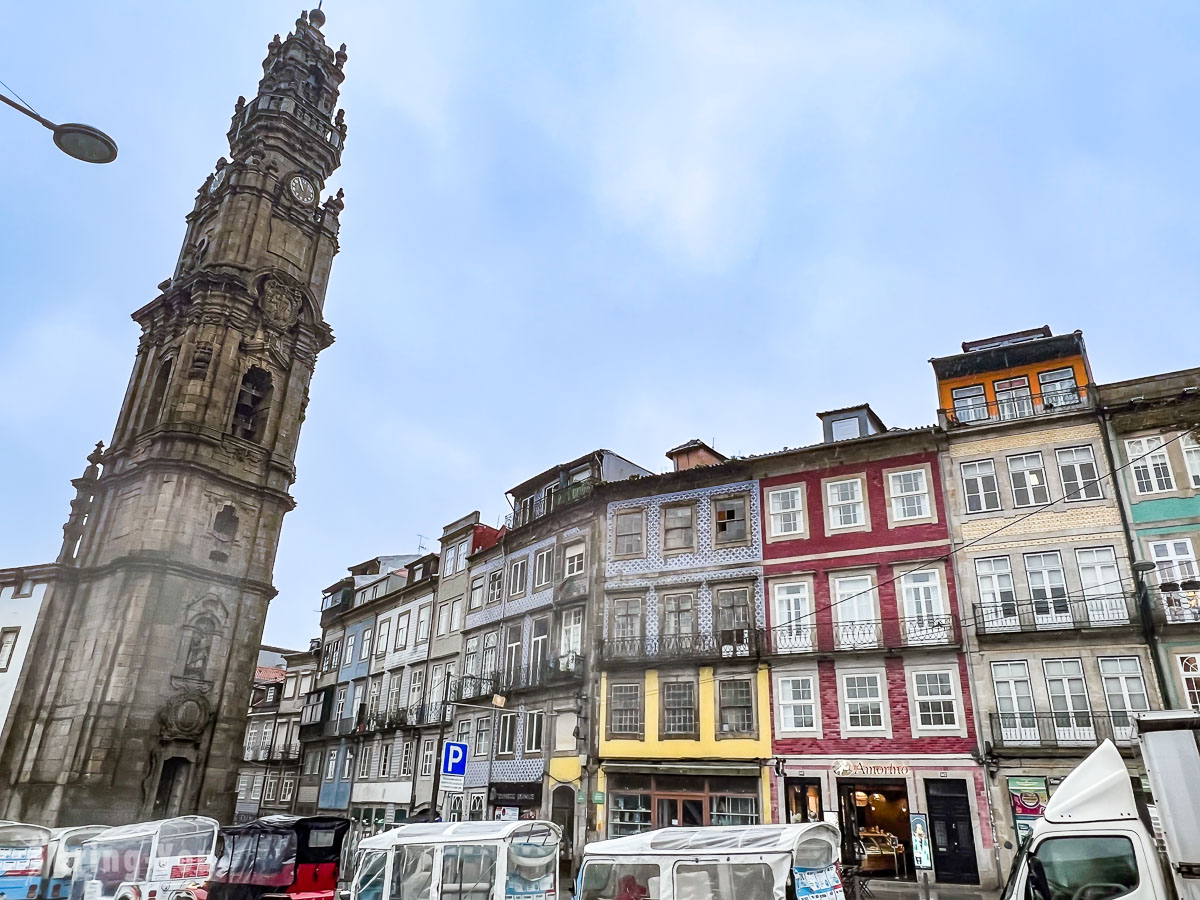
The church is a Baroque masterpiece designed to act as a guiding light for sailors during the Age of Navigation.
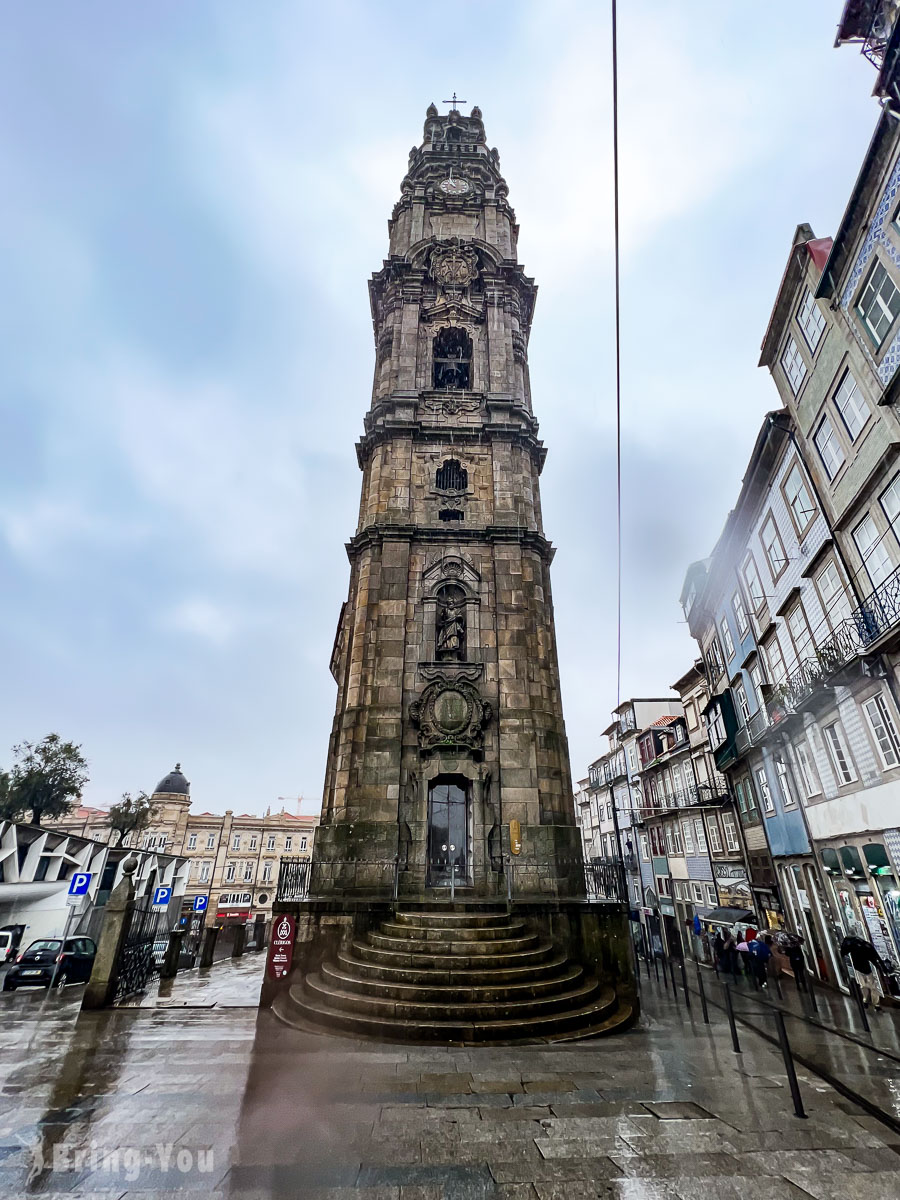
On the back side of the tower is the namesake church that has been going strong since 1750. Steeped in a splendid Baroque style, the Clérigos Church goes forward with delicate Baroque motifs.
You can visit inside to contemplate the golden Rococo-style carvings at 8 EUR for an adult.
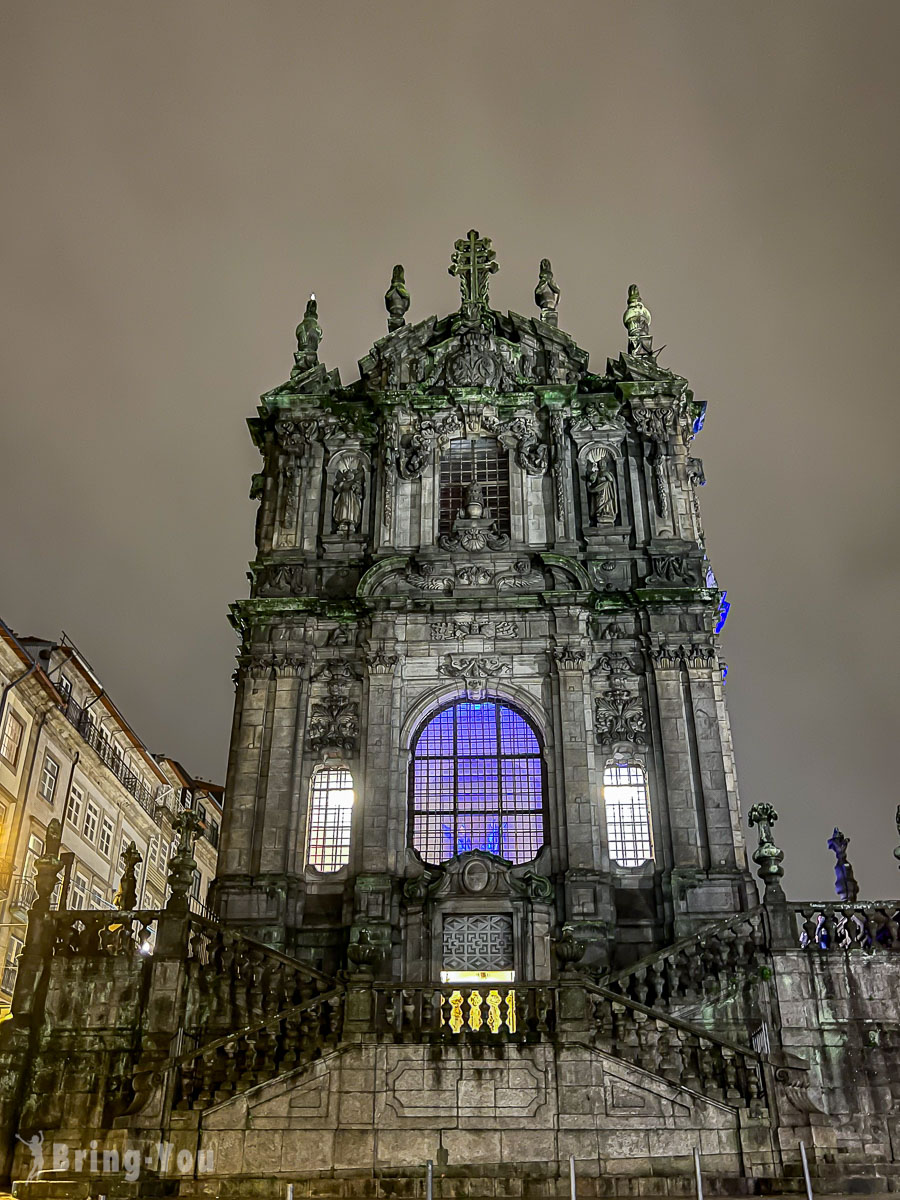
Now that you have a bucket list of Porto’s best things to see and do at the ready, complete your research with this ultimate travel guide to Porto. In this comprehensive guide, I break down the best ways to reach Porto from Lisbon, how to get around, money-saving tips, the best foods, and more.
